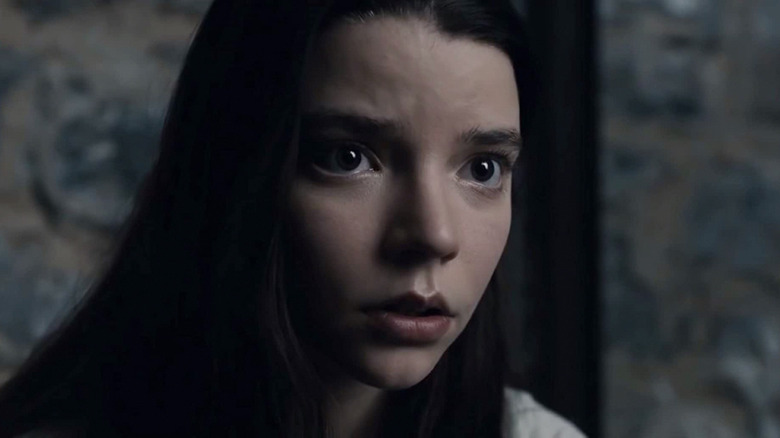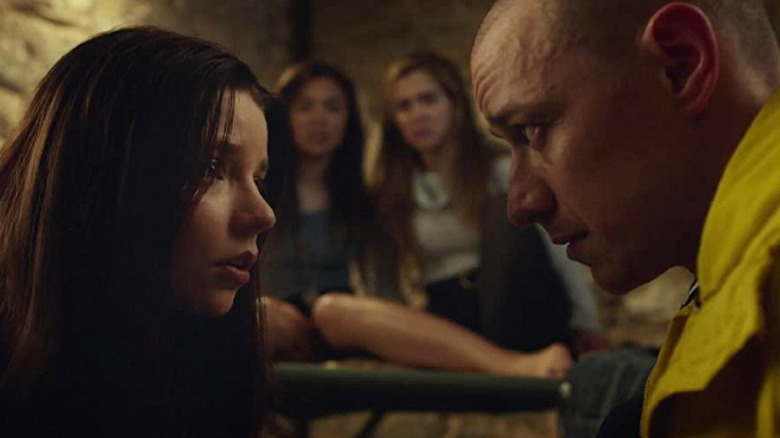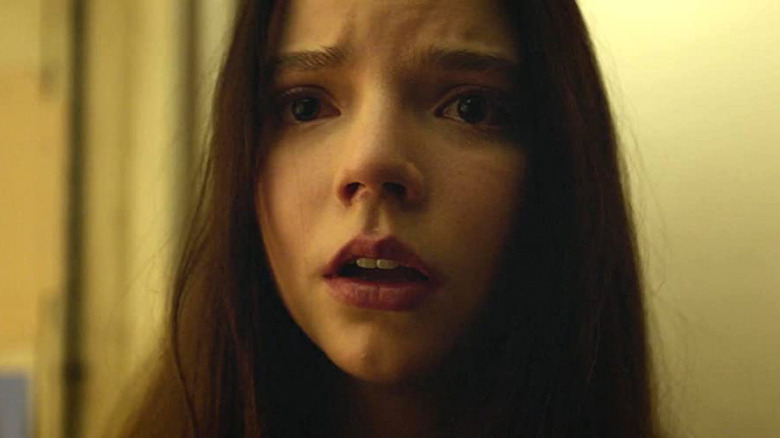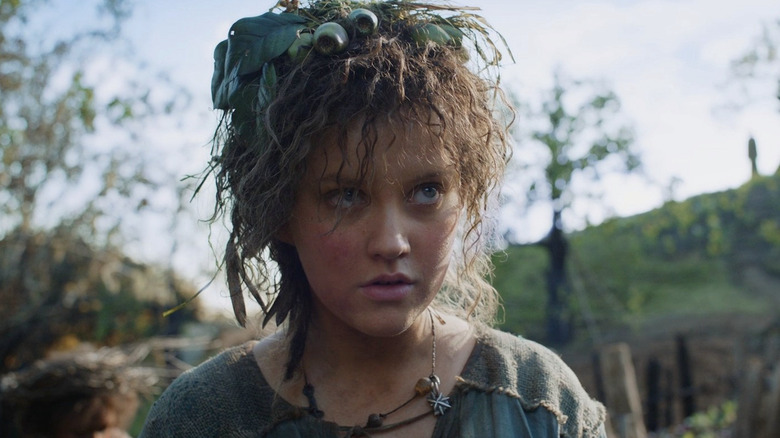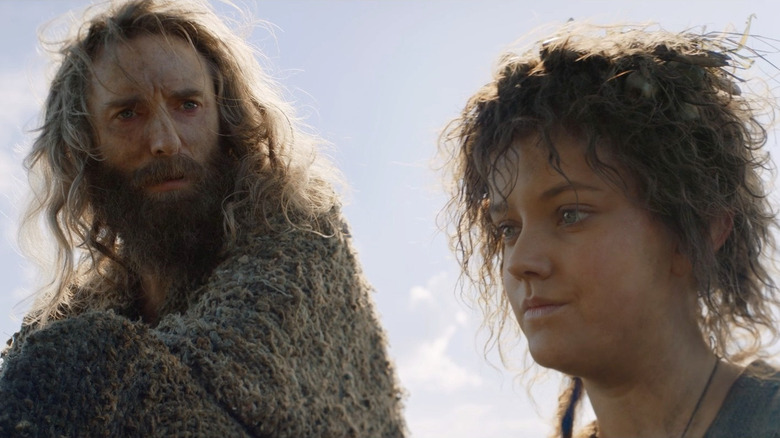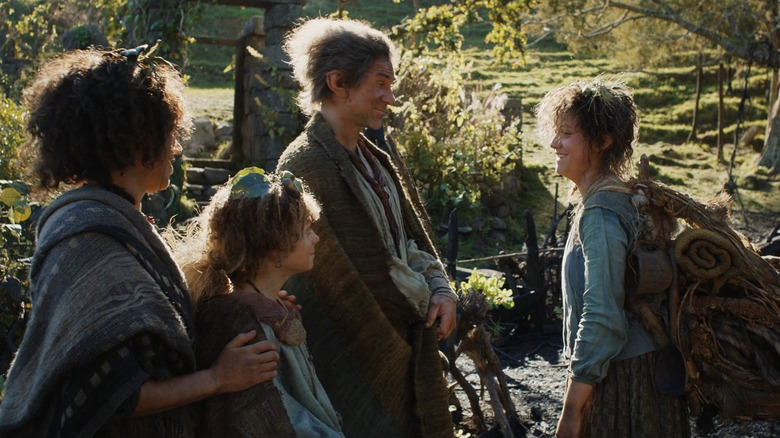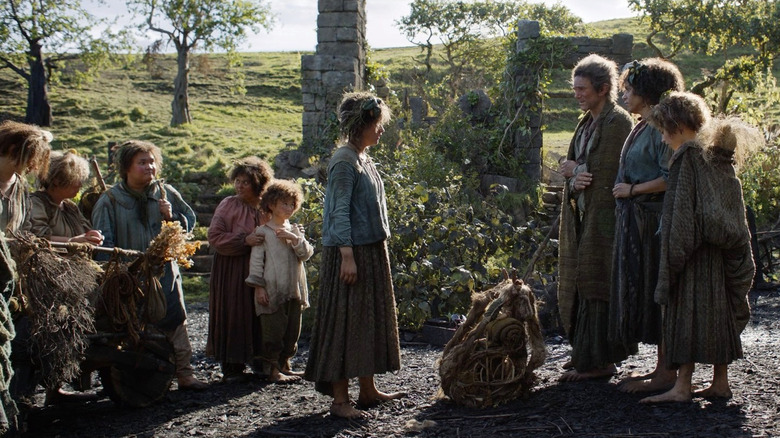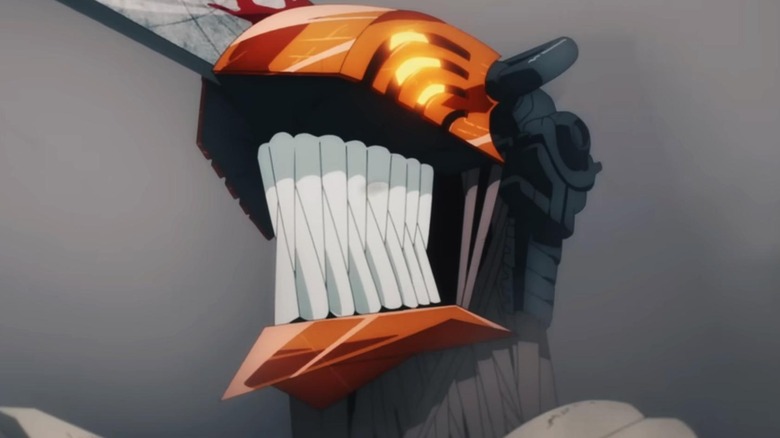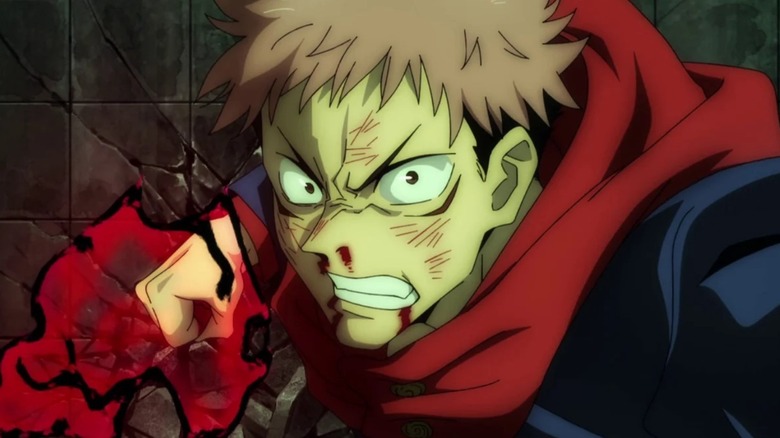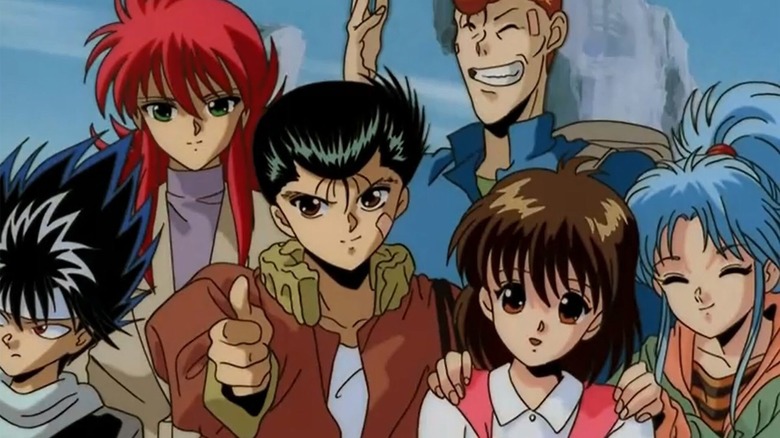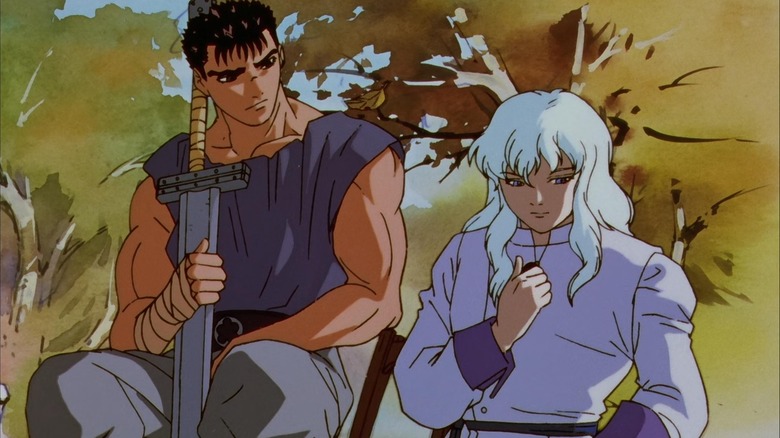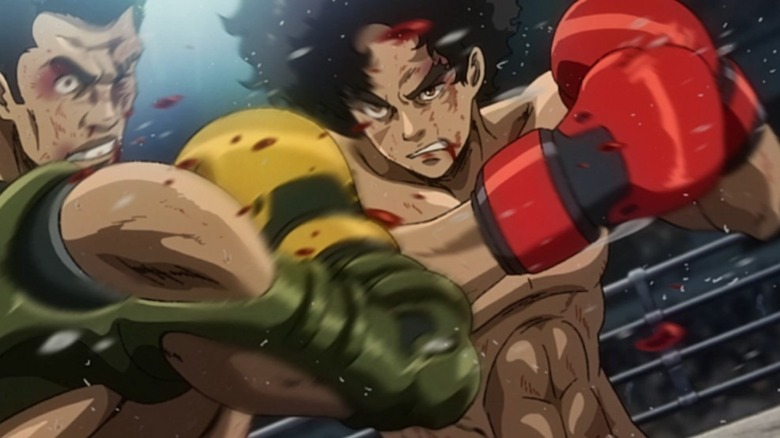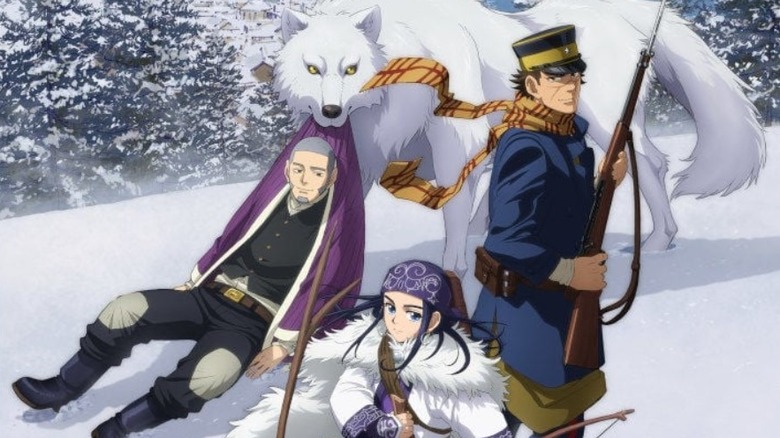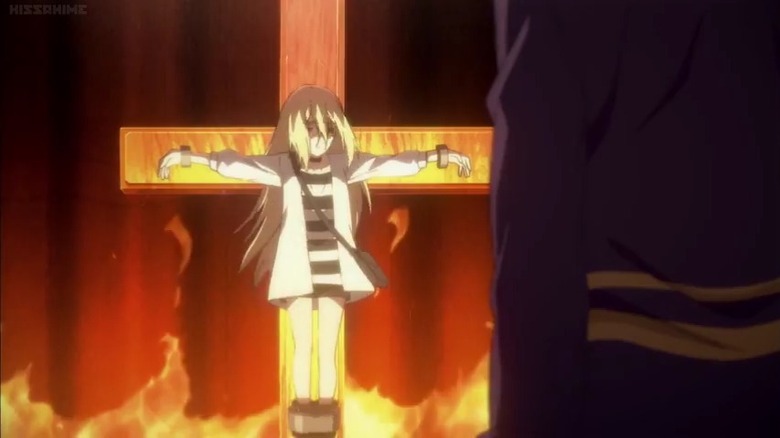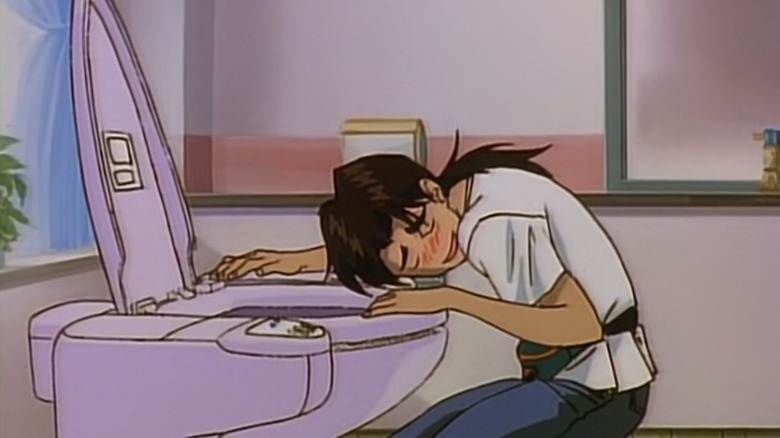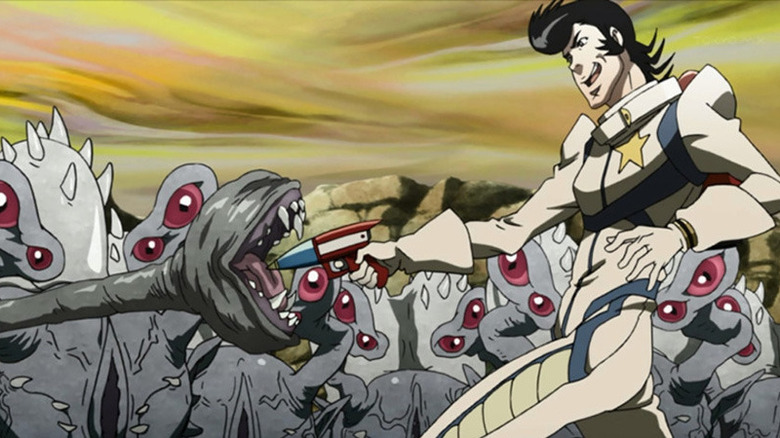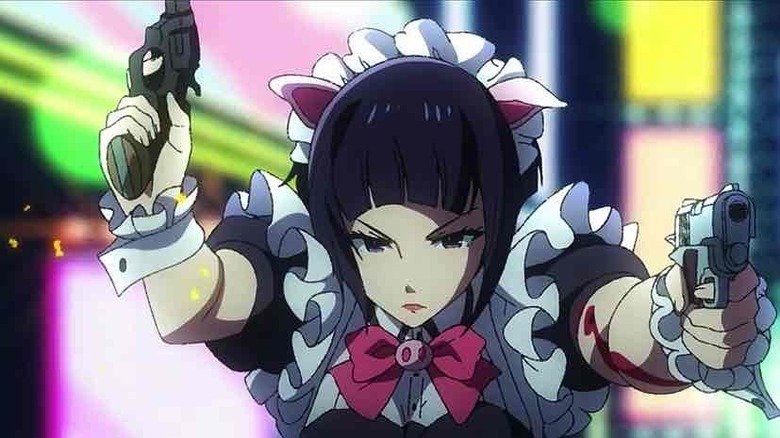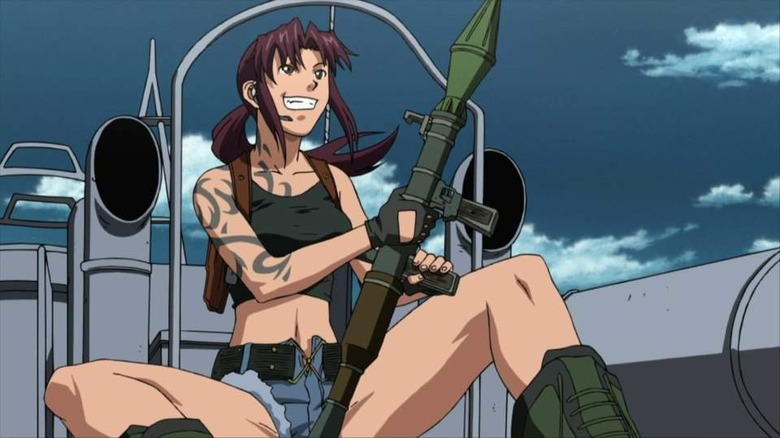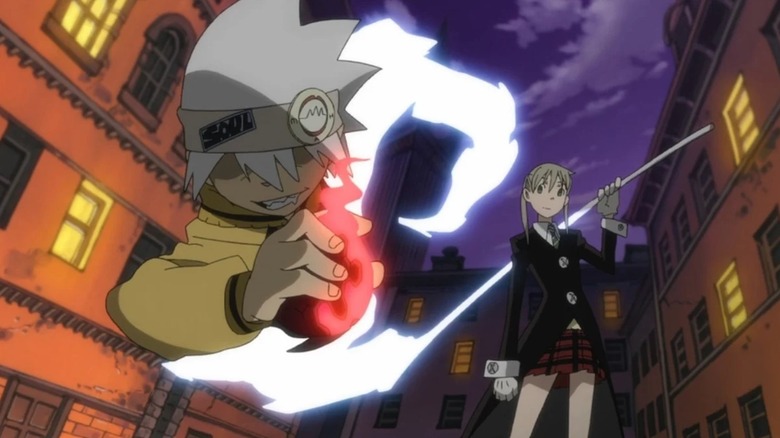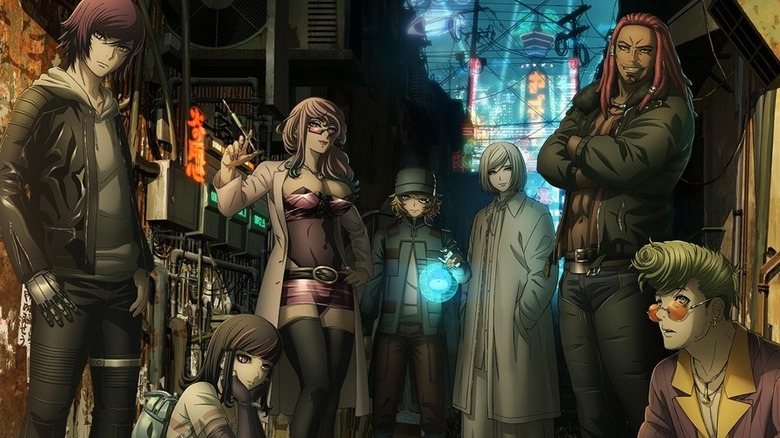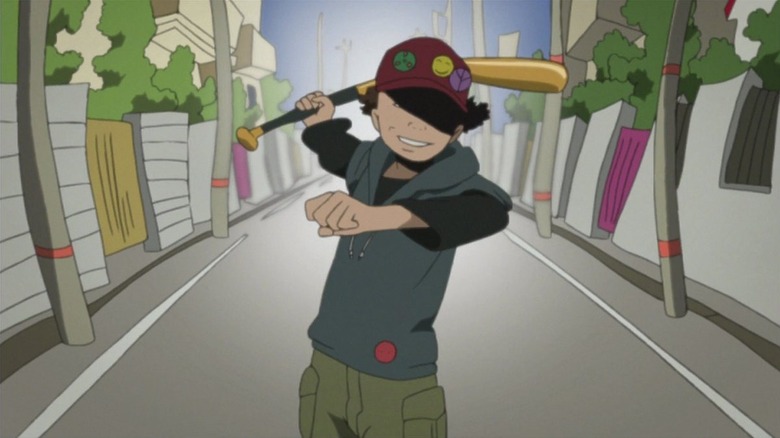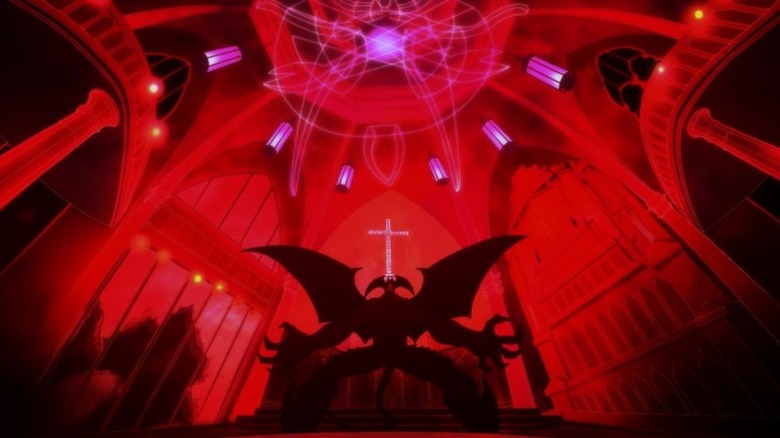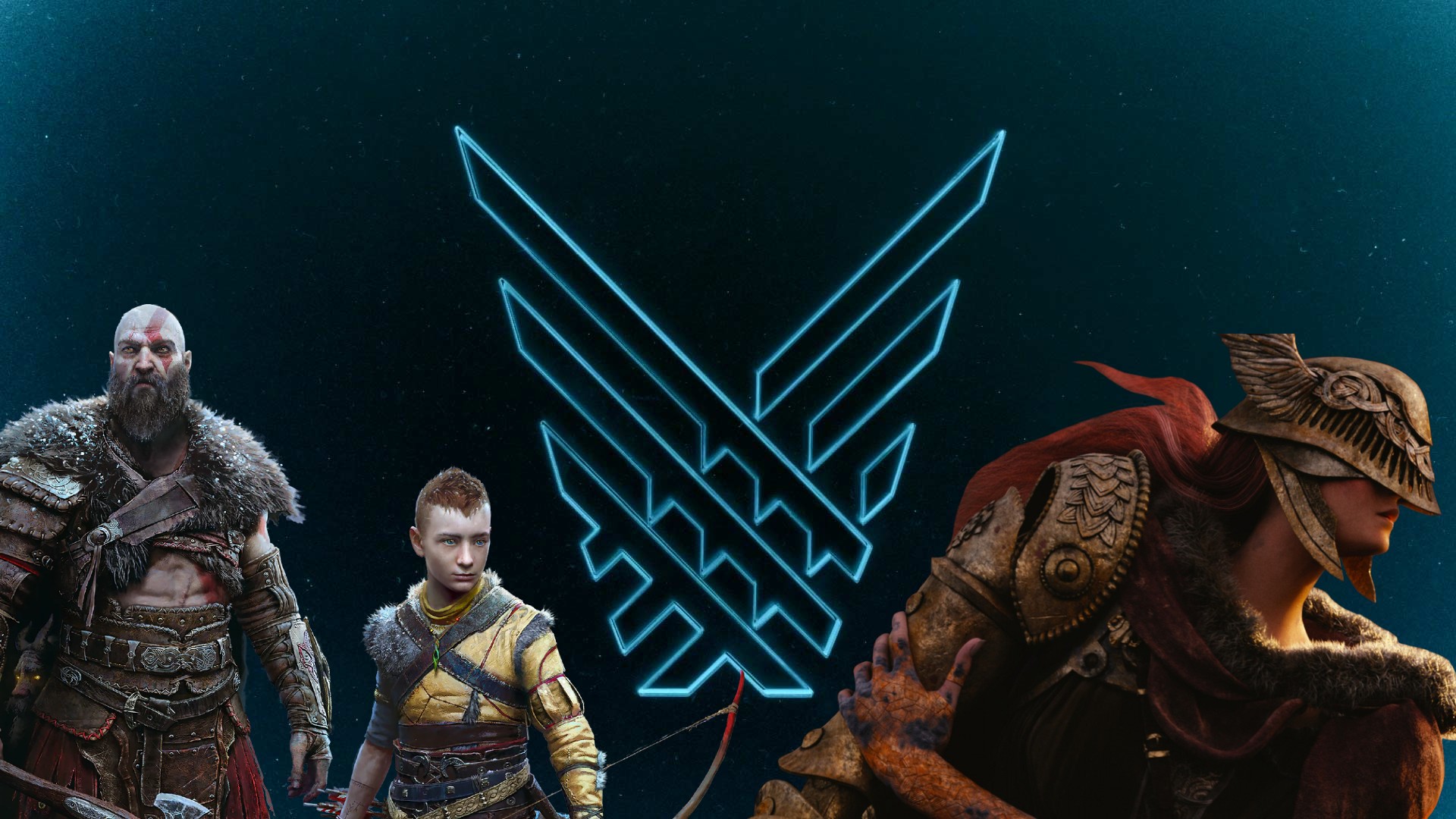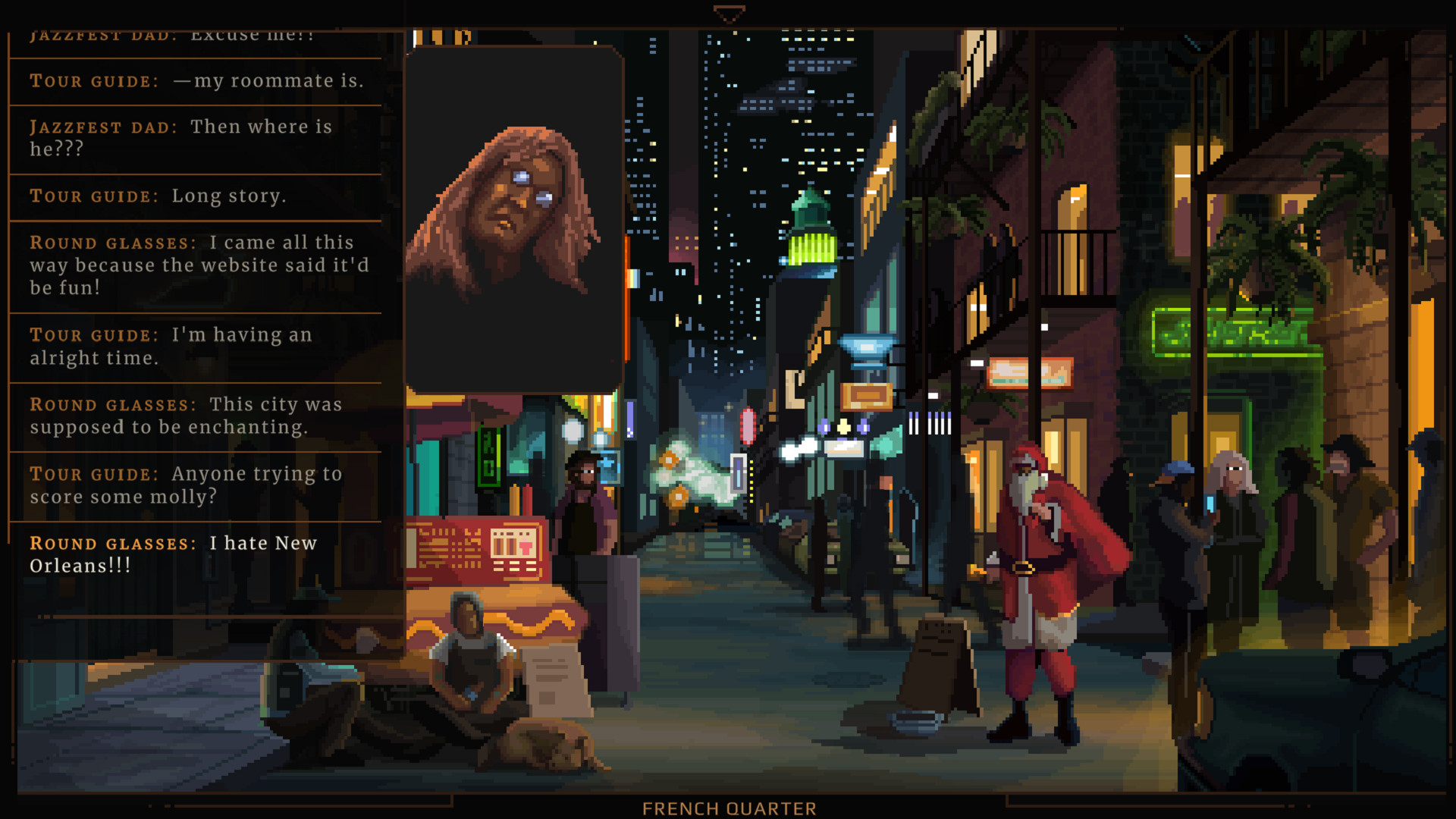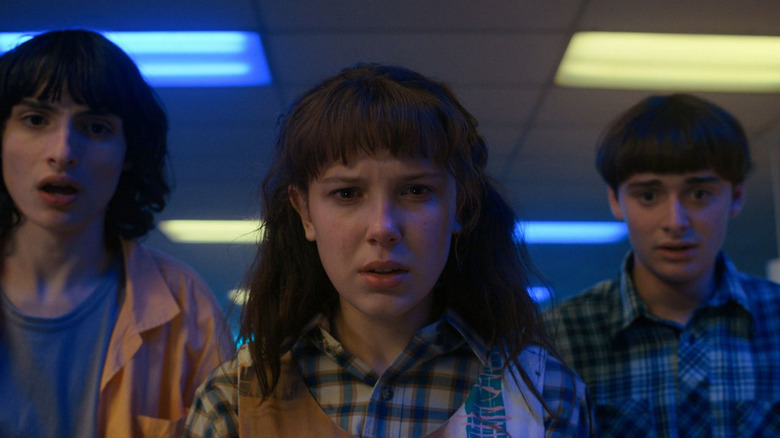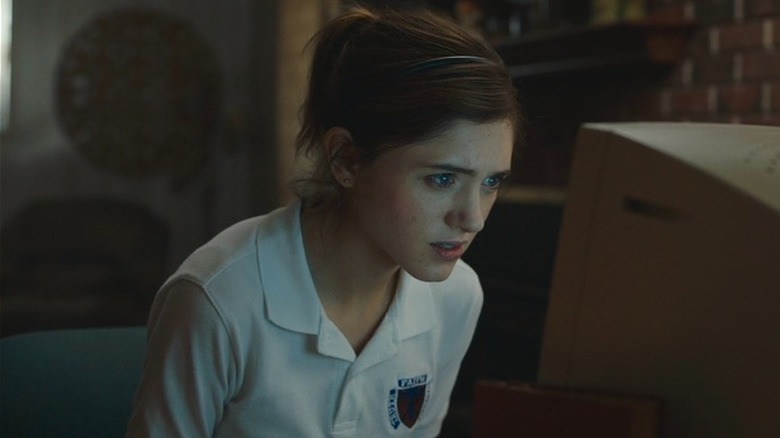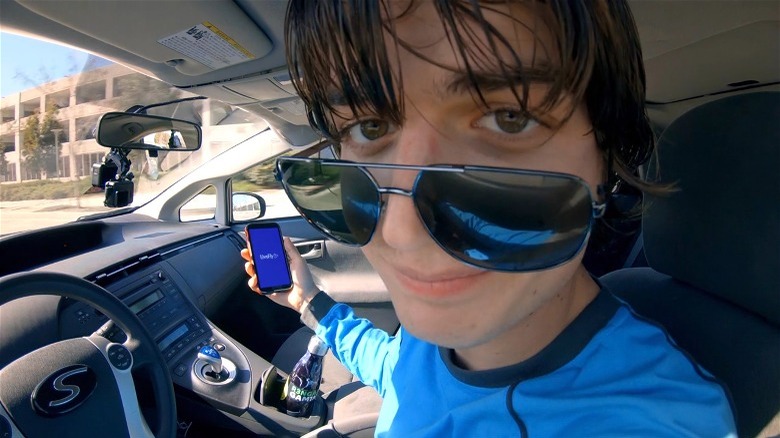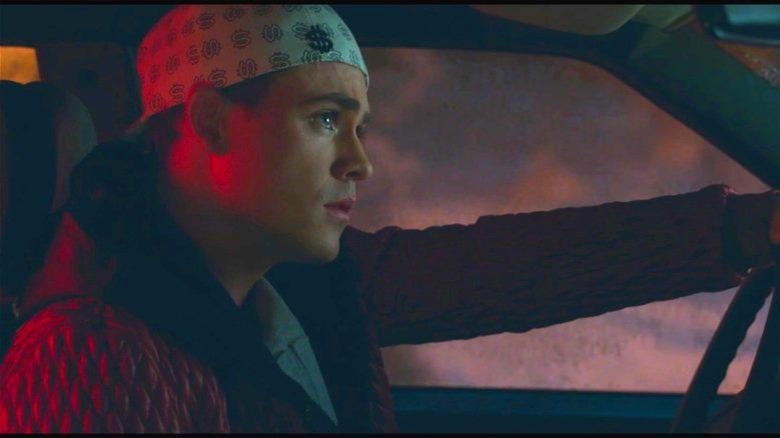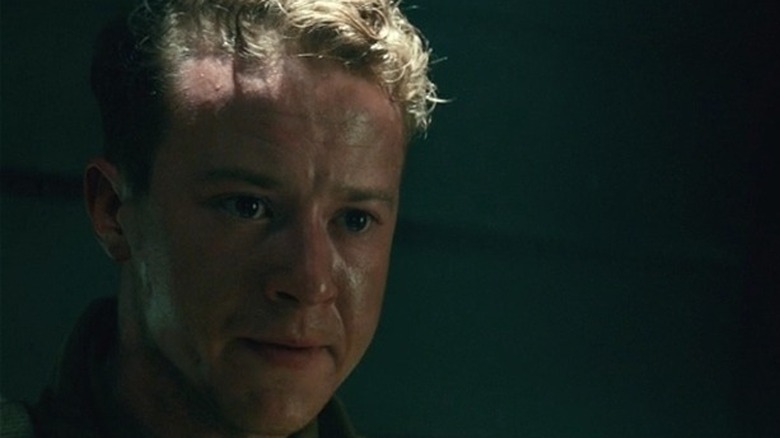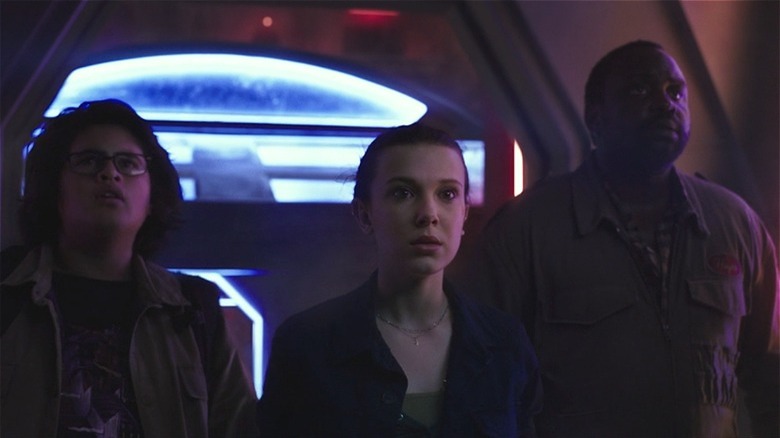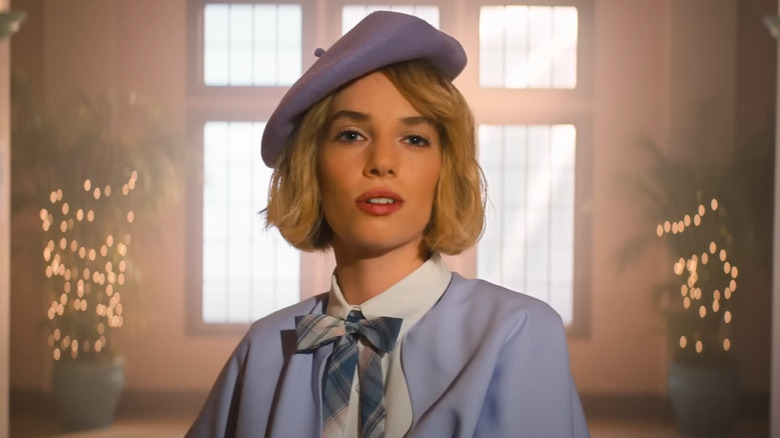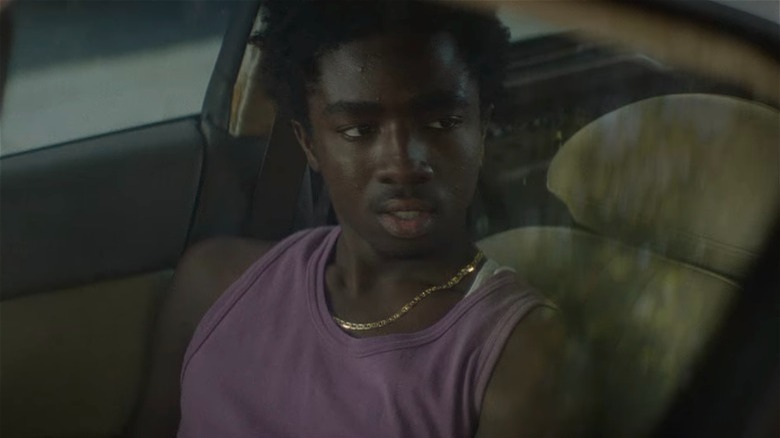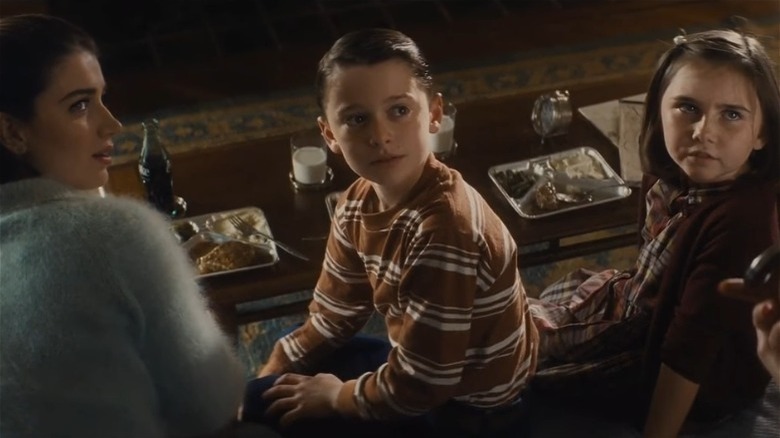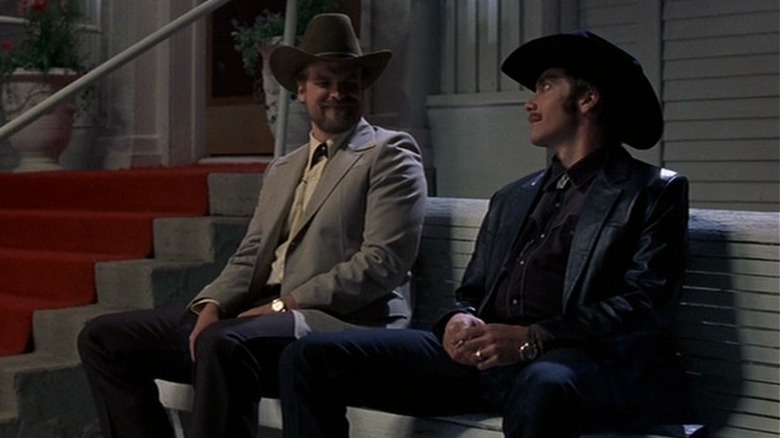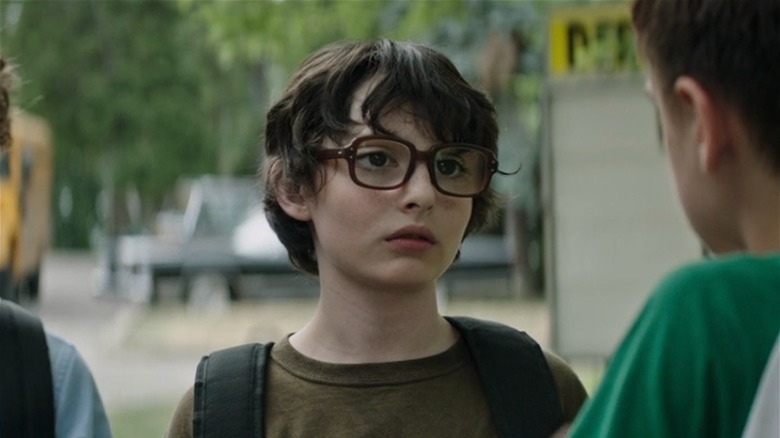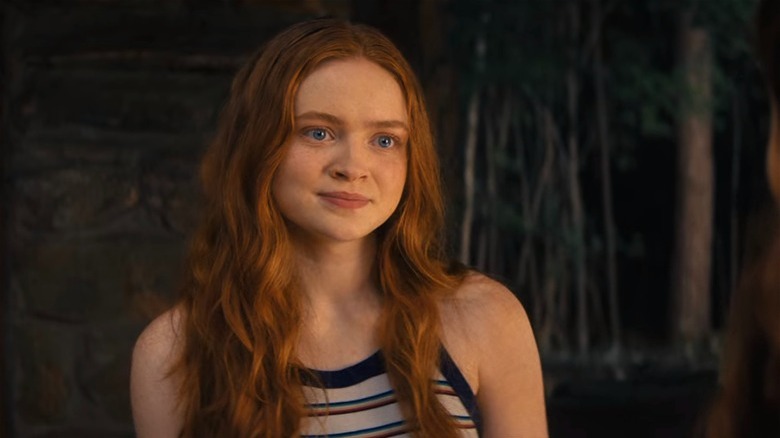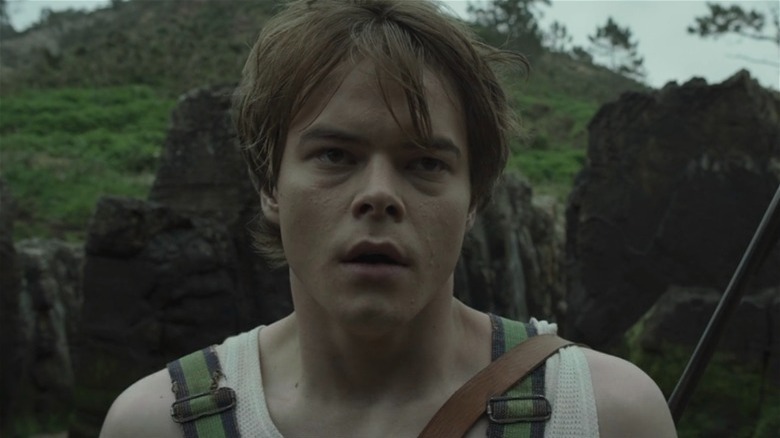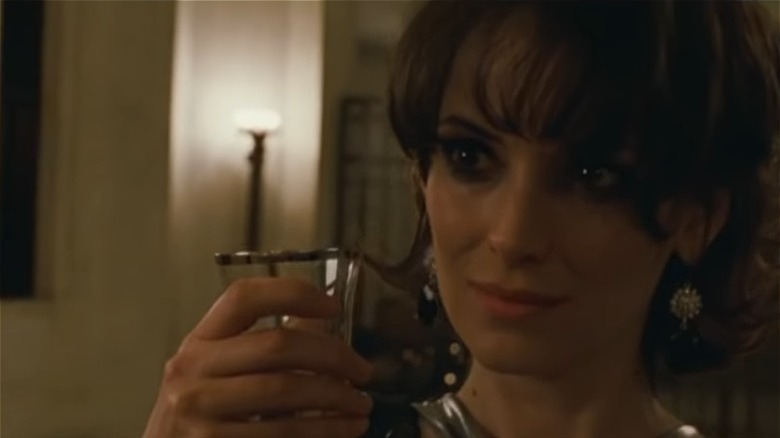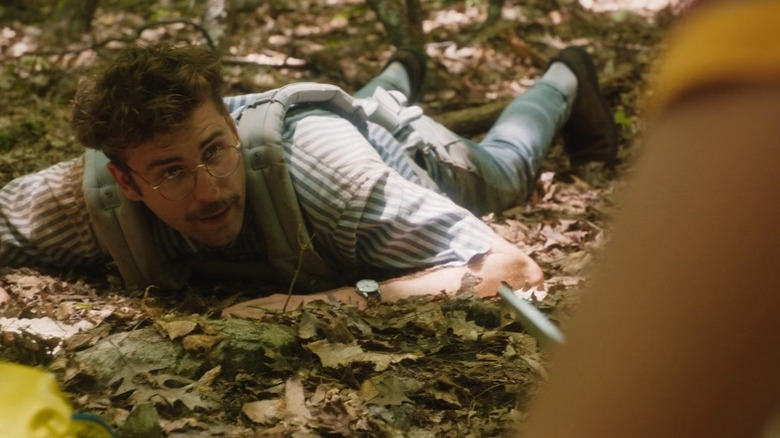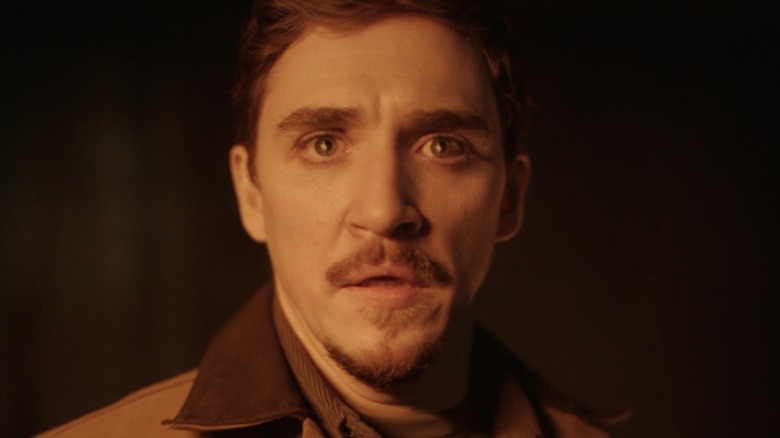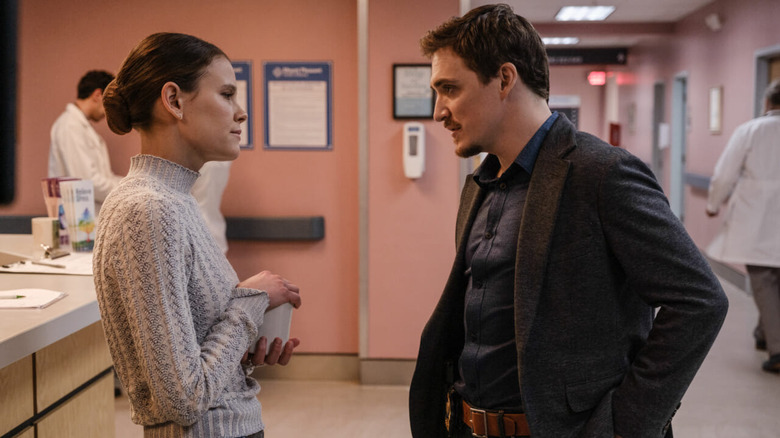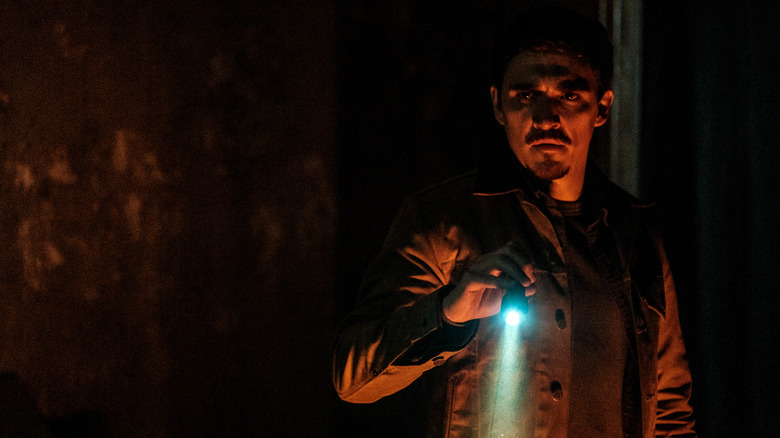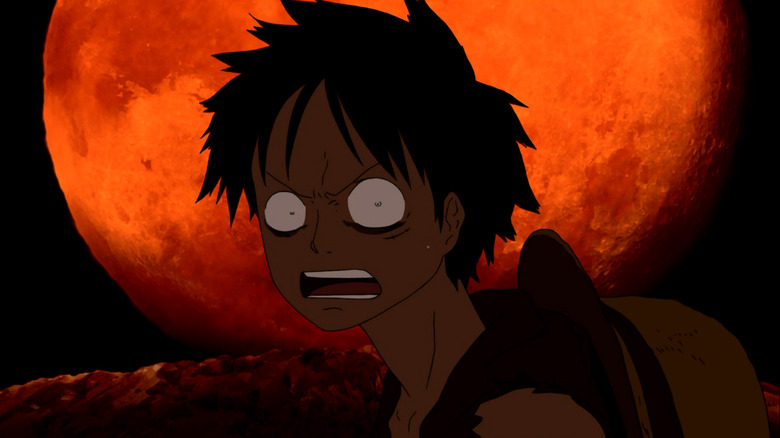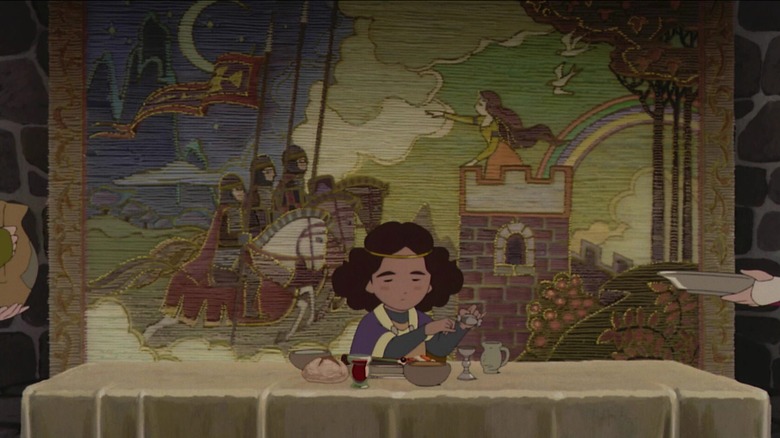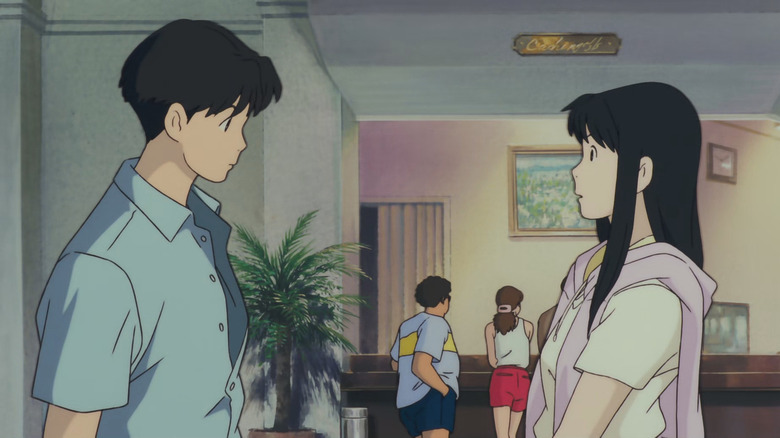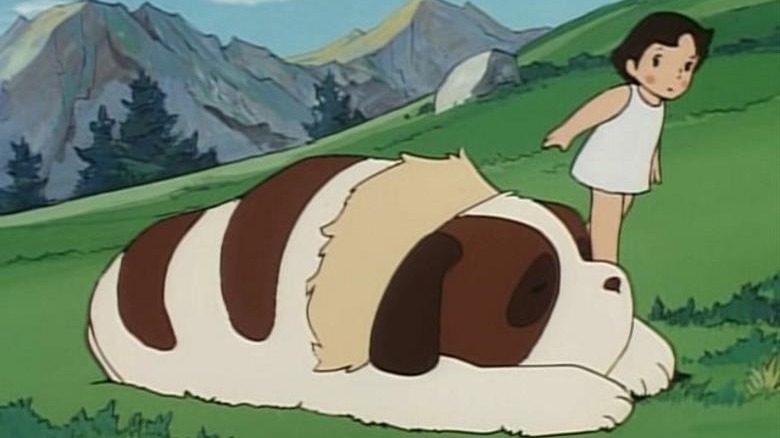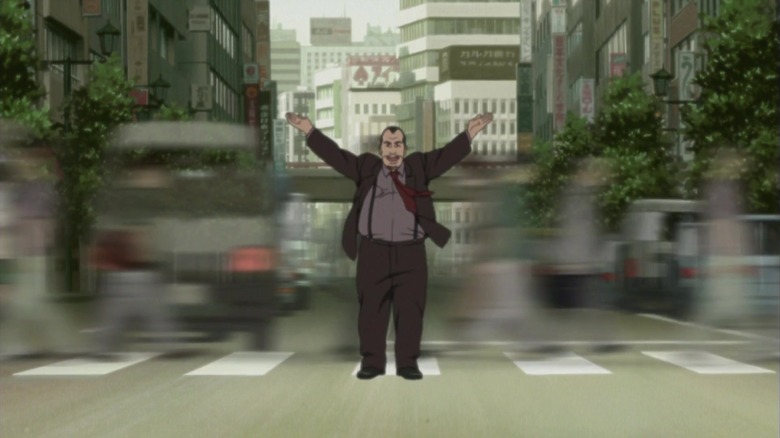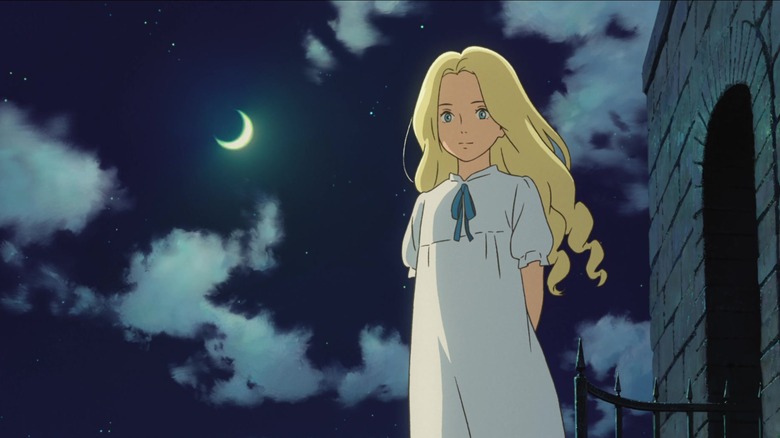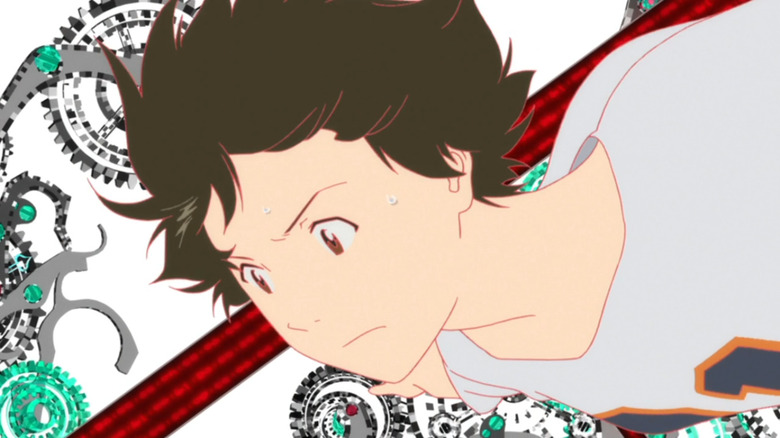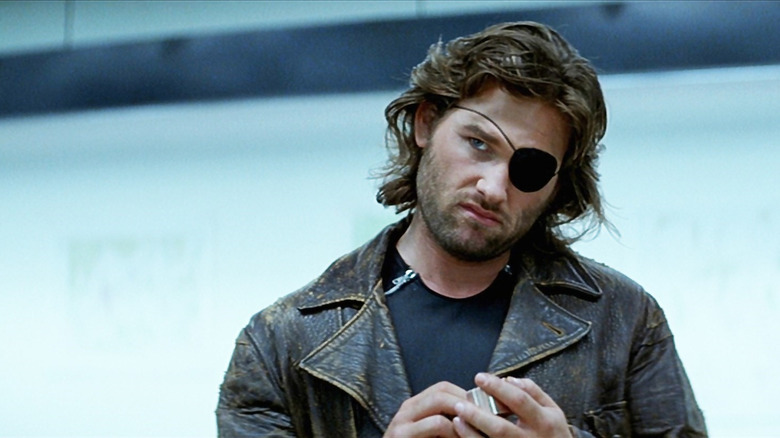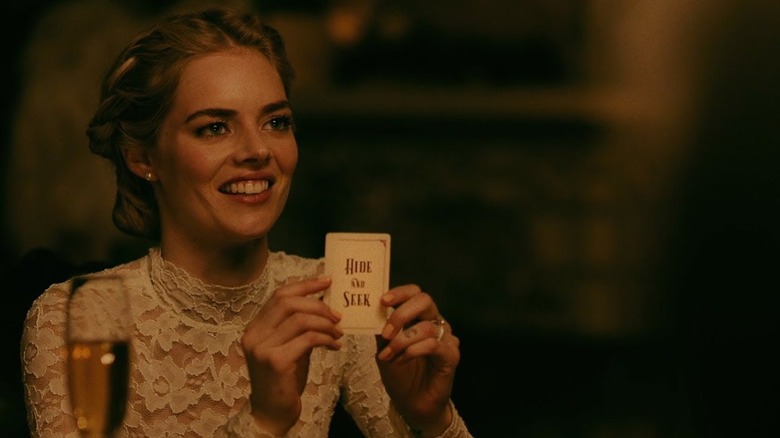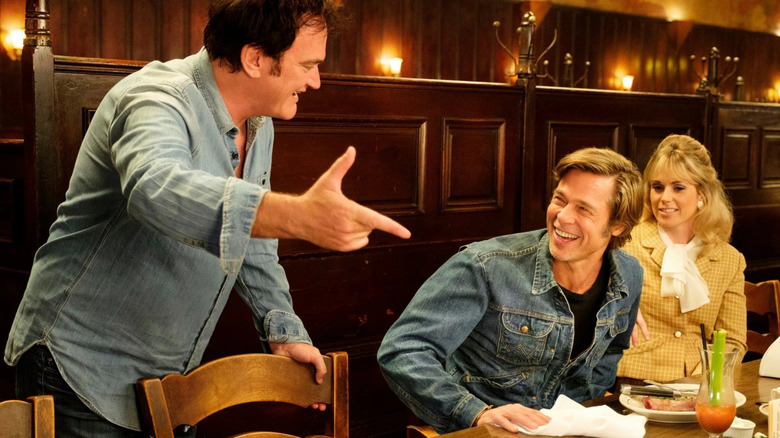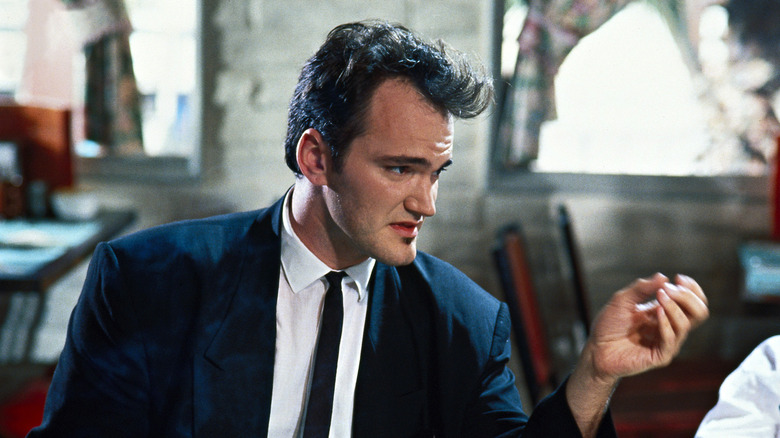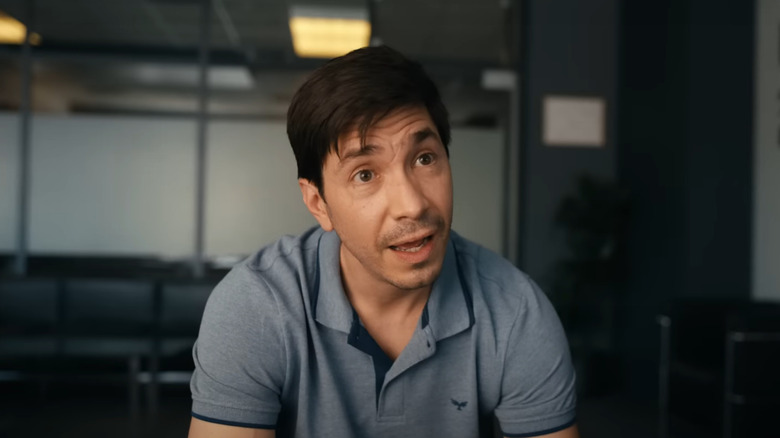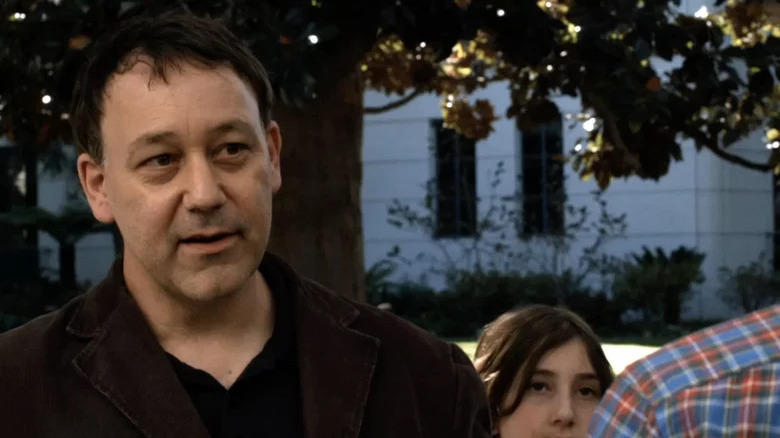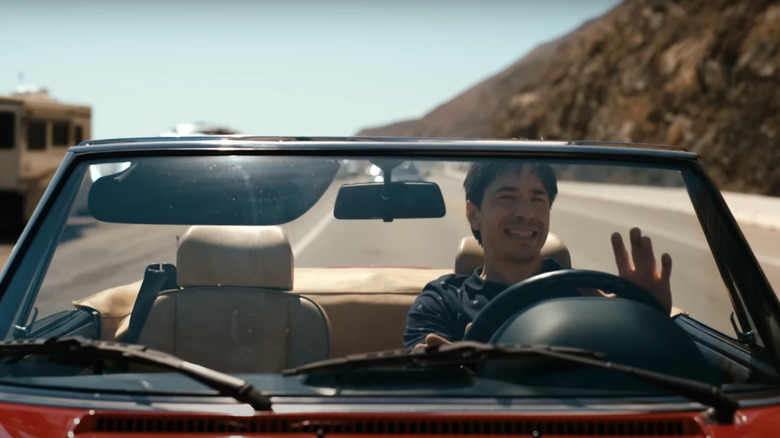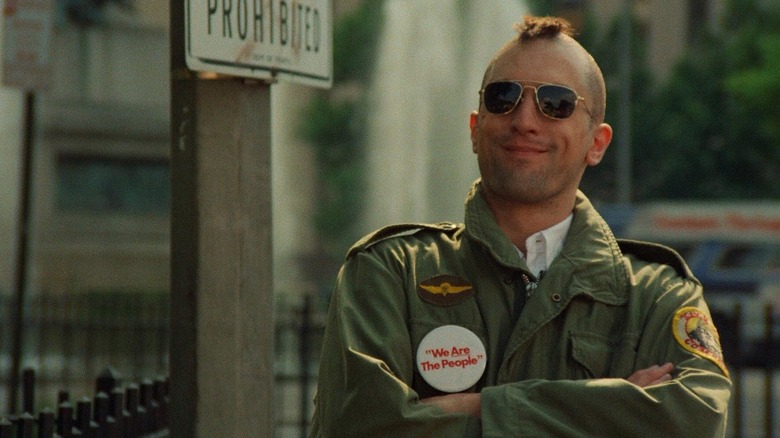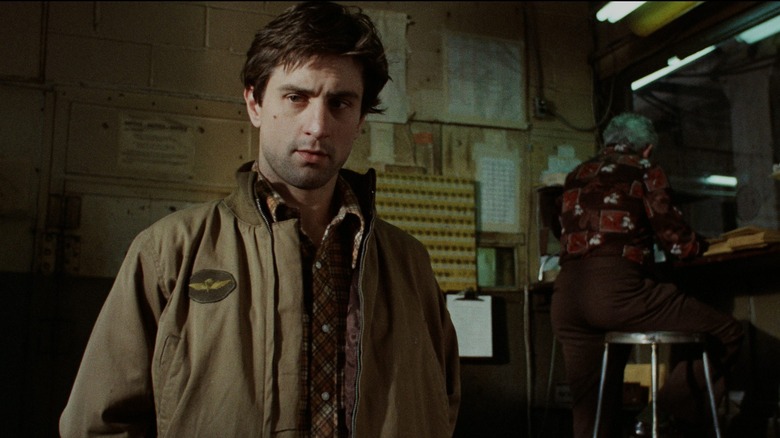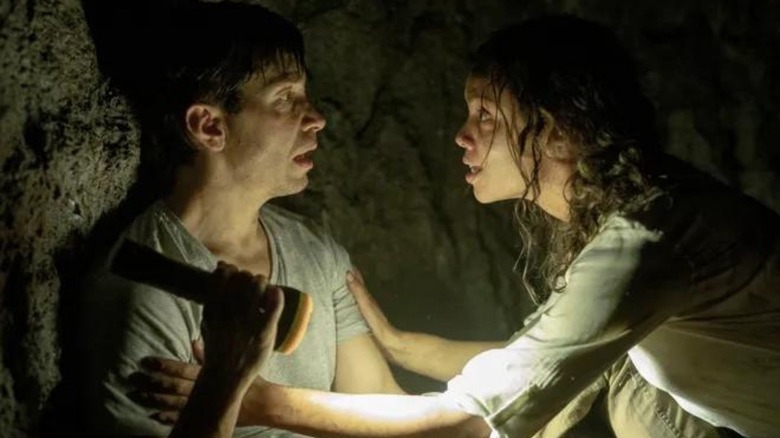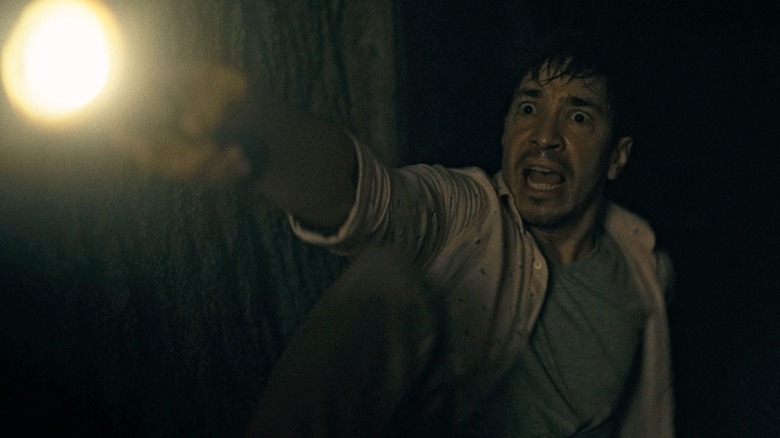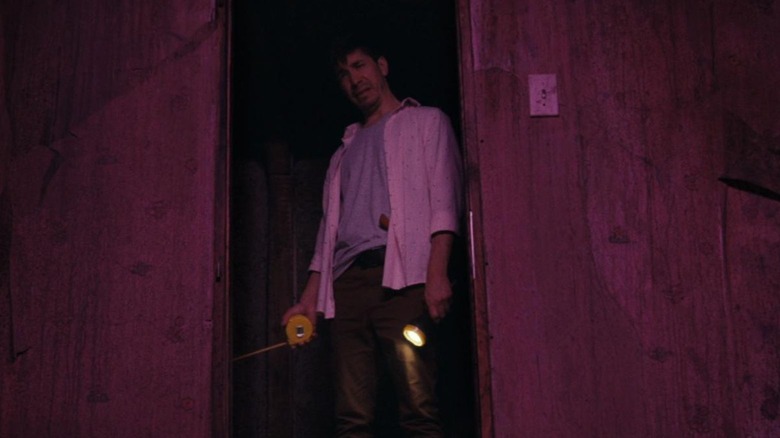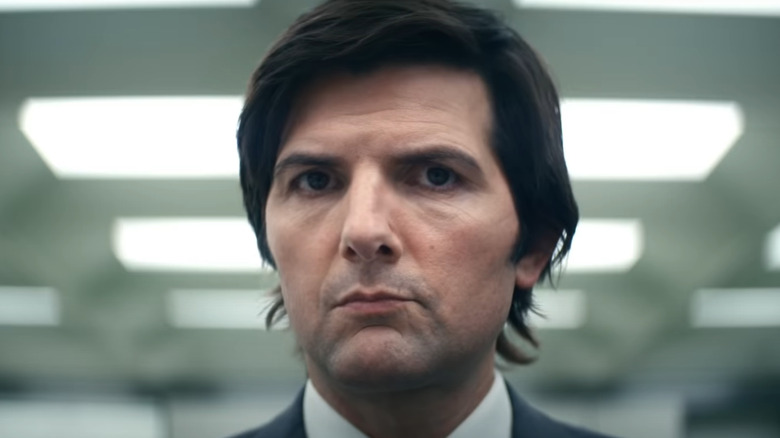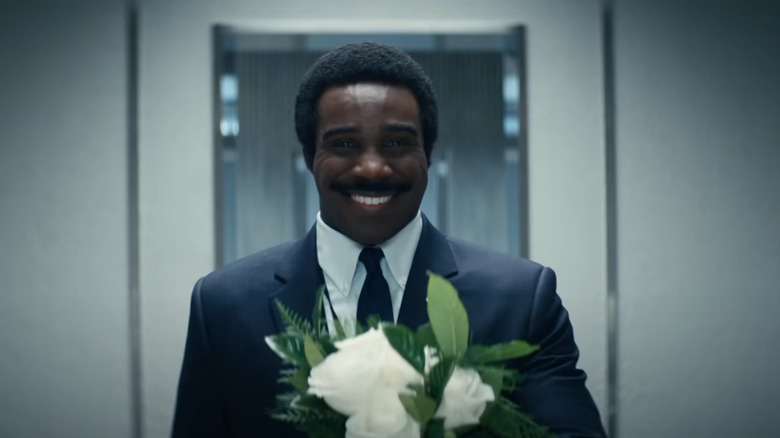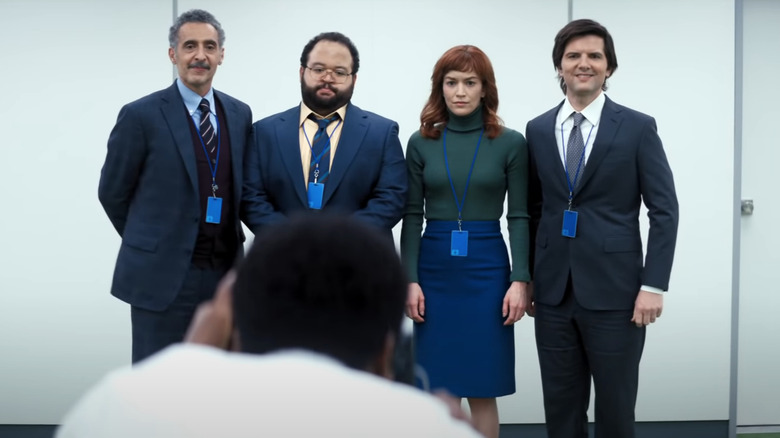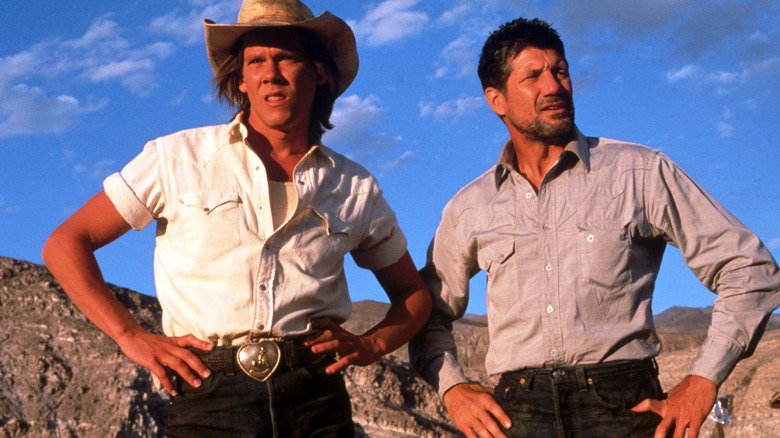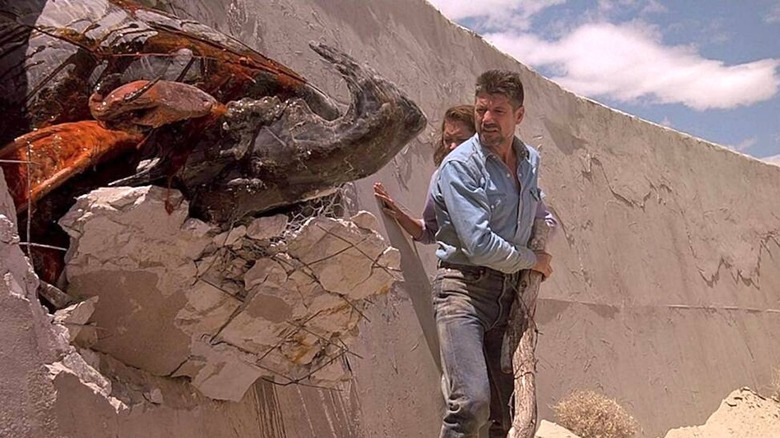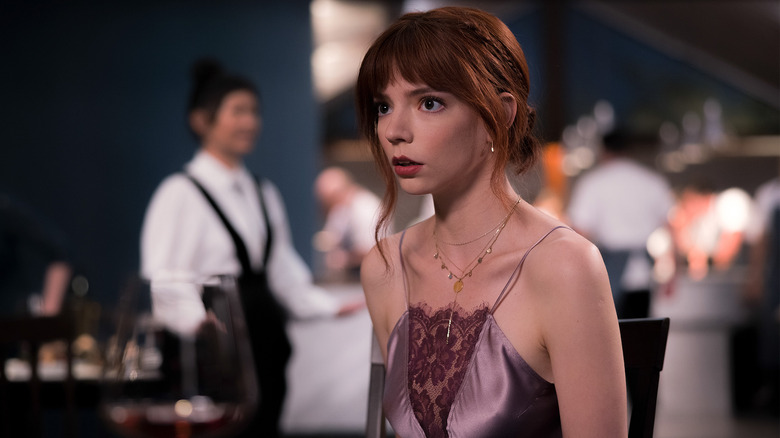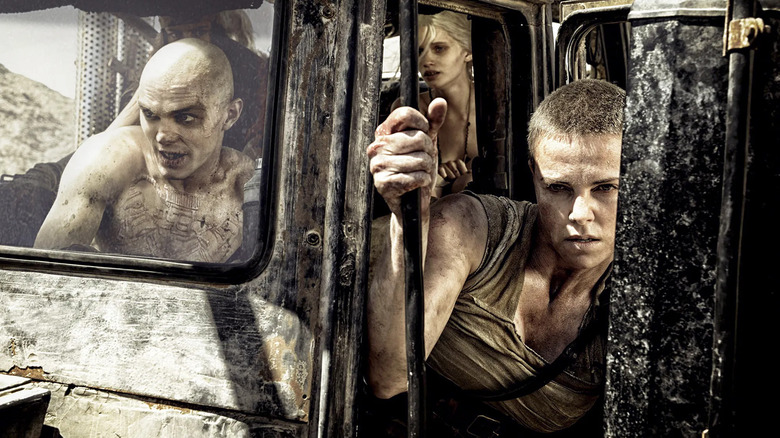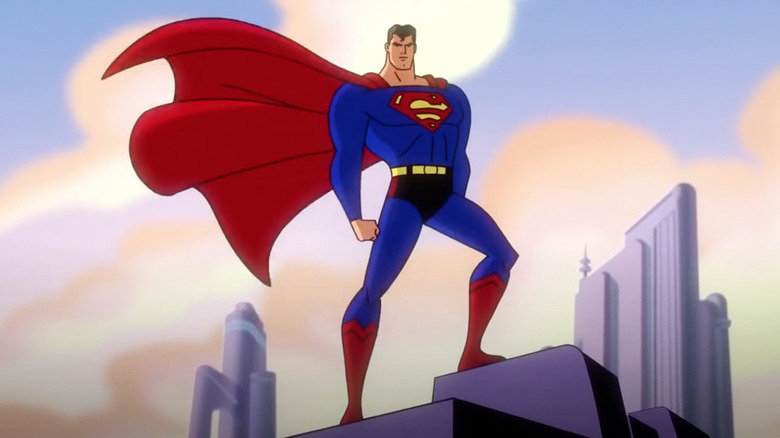
The suit. The cape. The "S." The perfectly quaffed hair. The square chin. "Superman: The Animated Series" neatly tucked all of Superman's signature features into a successful framework. The creators of "Batman: The Animated Series" brought their polished pedigree to the Man of Steel mythos — including Batman's darker tone, timeless vibe, and Art Deco design.
We've seen dark versions of Superman before with mixed results. In "Superman: The Animated Series," the darkness works because the story gives us a break from the heavy by mixing in lighthearted, bizarre, and cartoonish storylines and characters — some of which are among the best in the series. That's different from "Batman: The Animated Series," which maintains a mostly serious tone, even when the Joker frolics into frame.
It makes sense that "Superman: The Animated Series" is more out-of-this-world than Batman. Superman is an alien who fights oppression across the cosmos and meets interstellar beings who don't necessarily operate under Earth's standard procedures. Things are going to get a little wild at times — and that's what makes this series stand out.
Despite being a quarter-century old, "Superman: The Animated Series" is still exceedingly watchable. After revisiting the complete series, here's our picks for the top 14 episodes of "Superman: The Animated Series."
Brave New Metropolis
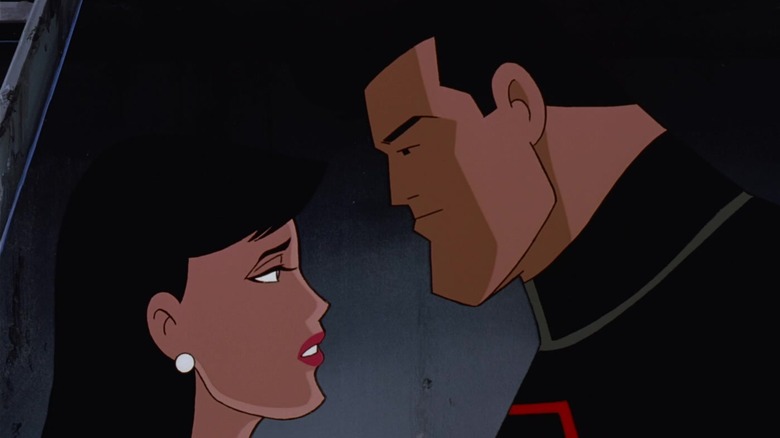
In every iteration of Superman — be it television, literature, film, or radio — he and Lois Lane have a complicated relationship. There's always mutual attraction and respect. Sometimes they're dating. Sometimes they're married. Sometimes they're just gettin' it on. In "Superman: The Animated Series," the Man of Steel flirts with Lois but keeps her at a distance because of his responsibilities. But you know Superman and Lois have deep feelings for one another.
The episode "Brave New Metropolis" shows us what happens if Superman never makes his feelings clear to Lois. She's pulled into an alternate dimension, where Lex Luthor and an iron-fisted Superman locked down Metropolis. This version of Superman takes no B.S. He beats back rebellion and laser-blasts hope.
Why are Superman's tights in a knot? Because in this world, Lois is dead. She became a victim of the violent crime he couldn't stop. He tells Lois that inspiring people with good acts wasn't enough. More importantly, he says that he didn't fully realize his feelings about Lois until she was gone.
That's when Lois slaps the s**t out of him.
Lois is not upset at this Superman. She's upset at her Superman for making the same mistake. After alt-Superman saves the day (surprise!), Lois says goodbye with a kiss — the kiss she wants from her Superman. After Lois returns to her dimension, her Superman swoops in to carry her away. Of course he does. He wants her to physically be in his arms even though he keeps her emotionally at arm's length. Lois is inspired and decides it's time to make her move. She asks him on a date. Does it happen? Likely not, given what she says and does in a later episode (Bruce u up?).
My Girl
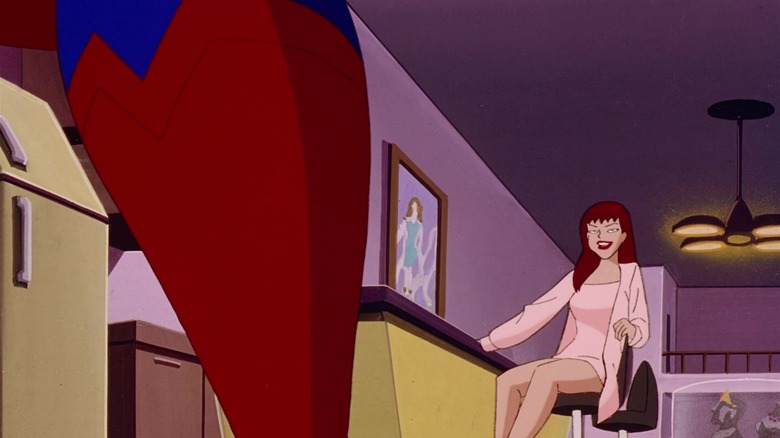
Being super is a lot of pressure — that's why Superman savors his time as Clark Kent. Clark is his release valve. Sometimes Superman needs to bring it down a notch and exist only as a cultured, rich, dashing man-about-town. If Superman loses that pressure valve, the result could be catastrophic.
In the episode "My Girl," Superman runs into Clark's high school girlfriend Lana Lang, who tells him she knows his alter ego. She also tells him she still cares for him. But — and this is a big but — she's dating Lex Luthor. Things could get messy.
Lana is abducted, and engaging action sequences ensue. This series is about more than Superman punching robot, alien, and mutant faces, though — it's about the relationships he cultivates outside the fights. In this case, that relationship is a sticky love triangle between Superman, Lana, and a suspicious Lex.
What the episode does well is it gives us a glimpse at what makes Superman and Lex Luthor so different, powers aside. We see a sympathetic Lex Luthor who cares for Lana, and it softens the lens on him. But as he becomes suspicious Lana is cheating, he can't help but be villainous. In contrast, Superman is respectfully clear to Lana that he cares for another person.
Lana respects Superman's honesty. She keeps his alter ego a secret. She also breaks up with Lex and moves to Paris to escape his toxicity. Superman and Lex Luthor are two powerful beings who have two wildly different approaches to humanity and they're treated differently by those they care for because of their actions. What is Superman's secret to staying level-headed? Glasses, a suit, and a reporter pad. Maybe Luthor needs a hobby as well.
Stolen Memories
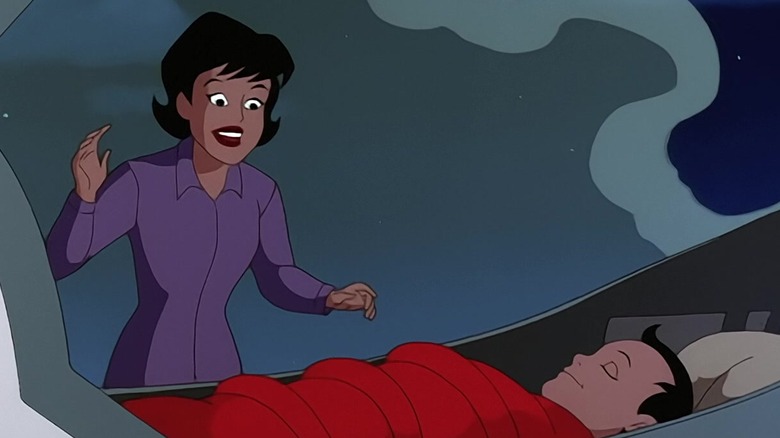
Who am I? It's the question that follows Superman even closer than his cape. Of course, it's a difficult question to answer when you don't know from where you came.
In the episode "Stolen Memories," Superman meets Brainiac — who, in "Superman: The Animated Series," originated as an artificial intelligence world-monitoring computer on Krypton. While onboard Brainiac's ship, Superman finds a memory orb that recorded all of Krypton's history and knowledge. At first, the information gleaned from the orb is limited, but as Superman learns more, he discovers Brainiac bailed on Krypton before a chain reaction destroyed it — then traveled to worlds across the universe to collect their knowledge and destroy them. Brainiac tells Superman: "The fewer beings that have the knowledge, the more valuable it becomes." This is in opposition to the ideal that drives Superman — you know, his "truth, justice, and the American way" mantra.
After defeating Brainiac, Superman has to decide what's next. To understand who he is, he needs to learn more from the orb about the people of Krypton, but he won't leave Earth to suffer the same fate as his former home planet. That means finding a place on Earth where he can study in solitude — and he may have found it.
Identity Crisis
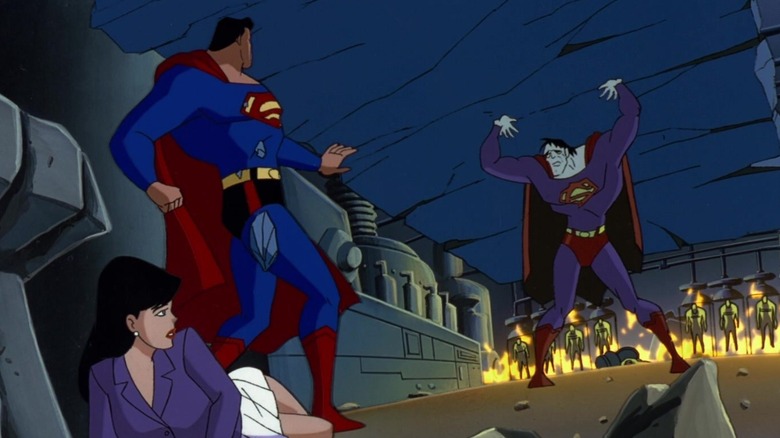
Superman is the embodiment of good. He wants to keep others safe and fights to do so. His pursuit of goodness can get a little destructive, but what's a damaged bridge, road, or skyscraper compared to the greater good? Admittedly, Superman appears a little reckless in "Superman: The Animated Series," doing tens of millions of dollars in damages to Metropolis in every episode. But in "Identity Crisis," we see how much worse it could be.
In the "Superman: The Animated Series" episode, Supes is doing his daily life-saving. He pulls a kid from a construction site. He stops a high-speed chase. He saves Clark Kent. He ... wait, what? He saves Clark Kent?
We find out that Lex Luthor used Superman's blood to develop new — but not improved —clones in a lab. The fake Superman who saved people early in the episode starts to act a little off. He's like a drunk Superman, slurring his words and slouching around. Mercy Graves aptly nicknames him Bizarro.
Bizarro has good intentions, like Superman, and he also has his powers. Unfortunately, Bizarro lacks Superman's ability to successfully integrate his good intentions with his abilities. Bizarro tries to be a hero — he even thinks he's Superman — but causes mass destruction.
Superman could make this ugly. He could destroy this malformed version of himself. Instead, Superman sees the good in Bizarro and decides to help him. Will there be destructive consequences down the road for this decision? Definitely. But that's the kind of hero he is — always doing what's morally right, even if it's not necessarily the wisest course of action.
In Brightest Day...
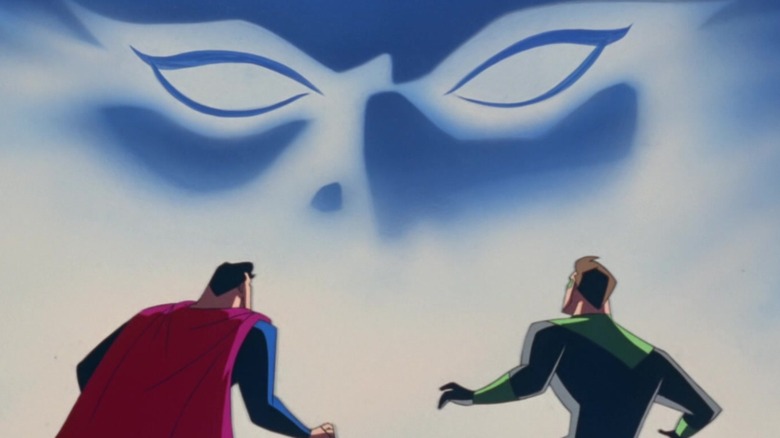
Proper superheroism takes a little artistry. Spider-Man has quips. Batman has impeccable timing. Wonder Woman has powerful grace. Superman has ... well, he flies and punches hard. He also takes a punch like a champ.
Enter Kyle Rayner. He has the empathy of an artist with the physical abilities of a low-grade hero — that is until an alien in green tights crashes on Earth. A glowing ring seeks out Rayner, knowing it can amplify his positive characteristics to make him the next Green Lantern.
Rayner quickly learns how to utilize the ring. It's an extension of his thoughts — which makes it an extension of his artistry. Rayner utilizes his creative knack to become a powerful — and entertaining — superhero. Rayner's first test is the powerful former Green Lantern, Sinestro. Superman is, frankly, out of his league in this battle of telekinetic creativity. Still, Superman finds a way to help Green Lantern gain confidence to defeat Sinestro and become the new protector of Sector 2814.
I suppose Superman is not as flashy as his counterparts like Green Lantern, but his stable presence allows others to shine. He has almost no ego and pursues the greater good. Maybe that is Superman's artistry. He's a canvas — an impeccably crafted canvas — that holds others' artistry so well, it makes them feel and perform as super as him.
Knight Time
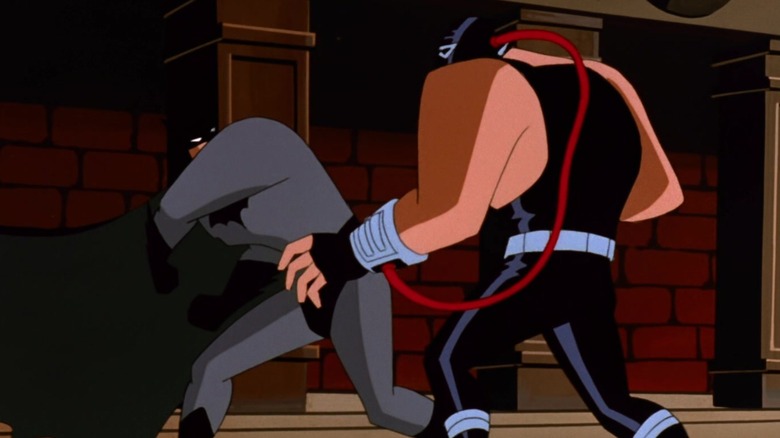
Superman is accustomed to being a mild-mannered human. He has a lot of practice as Clark Kent. But when Batman disappears, Superman steps into the role of a human whose manners are in no way mild.
In "Knight Time," crime is rampant in Gotham, and Superman investigates this spike in criminal activity with all the subtlety of a punch to the face. Robin informs Superman that Bruce Wayne disappeared, so when the bat signal shows, Superman dons Batman's cape and responds discreetly. The commissioner says Bane is in town and twice as strong. That would be dangerous for Batman — but we know who is really behind the mask tonight.
That's what makes this episode of "Superman: The Animated Series" so gratifying. It's like an episode of "Batman: The Animated Series" but with a hero who couldn't be more different role-playing Batman inside his gray and blue tights. Superman has to learn to lose his temper while keeping his powers in check — and he has to keep that balance while interrogating Penguin, Bane, Riddler, and Mad Hatter.
Super(Bat)man ultimately uncovers a plot by Brainiac — who torches him with a blast that would kill any human. The bat tights are destroyed but (a fully clothed) Superman emerges from the flames.
If Superman investigated Batman's disappearance in his usual flashy, punchy way — this still would have been a serviceable episode. But having Superman take over as Batman opened up creative opportunities that the writers used to tweak us fans. How often do we see Superman raise his voice? How often do we get a Bane-Superman fistfight?
After the episode ended, I started to wonder how Bruce Wayne would handle an otherworldly invasion of Metropolis while wearing Superman's tights. Could he fly? Would he stay out of the shadows? Could he be mild-mannered?
Absolute Power
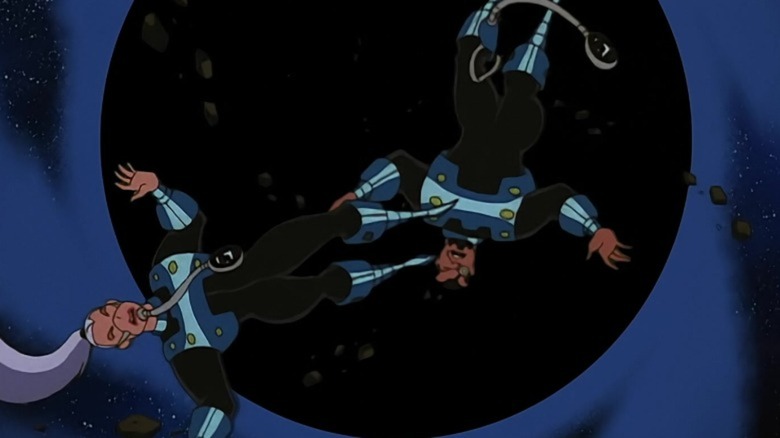
A black hole is an incredible amount of matter packed into a small space, making it extremely powerful. Sound like anyone we know?
In the episode "Absolute Power," Superman uses his powers (and his Kryptonian spacecraft) to save a ship that's headed into a black hole. He takes the people back to their planet but they're terrified of him because of who he reminds them of. It turns out Kryptonian convicts Jax-Ur and Mara — who he banished to the Phantom Zone in an earlier episode — escaped after a meteoric collision caused by the black hole. People who live on the nearby planet rescued the two Kryptonians who, thanks to the yellow sun, have absolute power on their planet.
Jax-Ur and Mara rule without compassion, killing those who oppose them. When rebels come to Superman for help, he's initially worried about the toll a war between Kryptonians will cause — but he's reminded of an old quote that he appreciates, "Evil triumphs when good men do nothing."
Superman understands the responsibility that his powers place on him. He knows he has to protect those who don't have the power to protect themselves. Why do fans love Superman nearly 90 years after his first appearance? Because he doesn't coast through life with his powers. His happiness is derived through do-gooding. He chooses not to let his power corrupt him — not absolutely — or in any capacity. That may be his greatest strength: his belief that the benefits of his powers should be shared by all.
New Kids In Town
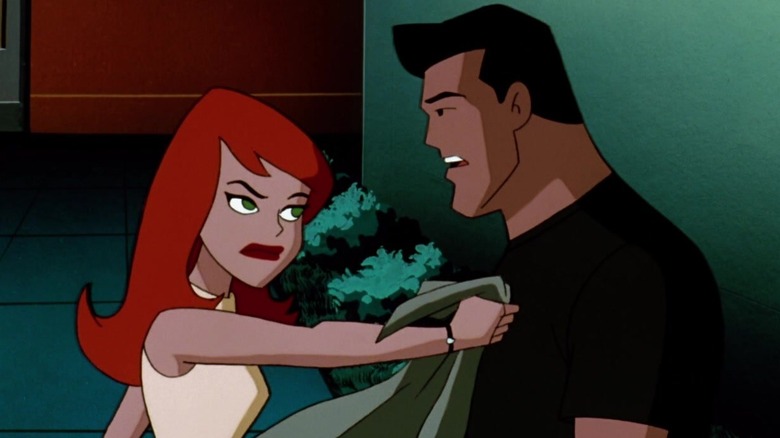
Some of us are a little burned out by origin stories. It's possible the creators of "Superman: The Animated Series" were too. They glossed over Superman's younger years, focusing on 20-something Superman for most of the series. However, once they established who Clark and Superman would become, they took us back to look at how he got there. He sees his powers manifest in a refreshing take on the origin story — especially for the late '90s.
In "New Kids in Town," teenage Clark Kent is in Smallville, struggling to handle the powers he has suddenly gained. For instance, he can dunk a basketball with ease, but in doing so, sends another student flying into a table. When Lana Lang confronts Clark about his lack of humility, Clark is frustrated and confused (isn't every pubescent teen?). Good news for him, clarity is on the way.
Brainiac arrives from the year 2979 to eliminate Clark before he becomes Superman. But Brainiac is not alone. Three members of the Legion of Super-Heroes also arrive. This charismatic super trio (can we get a show for them?) helps Clark defeat Brainiac. They also imbue Clark with a sense of who he will become and what he will accomplish, but then erase his memory to allow him to make that journey organically.
You're reminded in this episode why Clark becomes who he is: The people in his young life have such high character. Lana Lang cares about Clark enough to confront him. The Clarks stand by his side to battle Brainiac. These are lessons in humility, courage, and poise in the face of power — all foundational attributes for who Superman becomes.
The Main Man
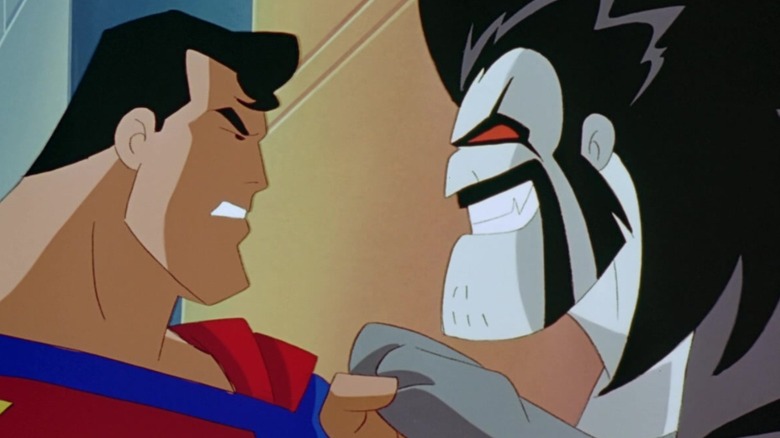
Eight episodes into "Superman: The Animated Series," you think you know the dark tone and straight-shooting style that frames the series. Then intergalactic bounty hunter Lobo careens onto your screen in "The Main Man," blasting away your expectations with his space magic weaponry, cartoonish zeal, and college dropout wit.
Lobo's presence is ridiculous — and it works. Lobo brings a new set of crayons to the world's stark palette. He's followed by electric guitar licks that rip through the series' usual strings. He turns the series on its side, pushing Superman and Clark Kent in new directions. At one point, Clark teases Lois over a front-page byline he earned. It's a little playful snark from the usually reserved Clark that we hadn't seen until this point. You realize Superman likes to roleplay as Clark (see my pressure valve comments) because he gets to explore the darker side of his id— even if that side is just a darker shade of pale.
Lobo's larger-than-life presence does a good job of provoking Superman into showing us what makes him super: his humanity. During this episode, you realize Superman's principles stabilize the framework of the series. Superman has boundaries guided by his principles — either you play inside them or he punches you out of frame.
In the second part of the series, Lobo begins to operate within that framework as the two team up. His cartoonish flair spray-paints the screen, but he never colors outside the lines. Together the divergent duo paints a pulchritudinous picture of a superb superteam. (Lobo leans over my shoulder: "Ya got thesaurus.com at the top of ya favorites, dont'tcha?")
Ghost In The Machine
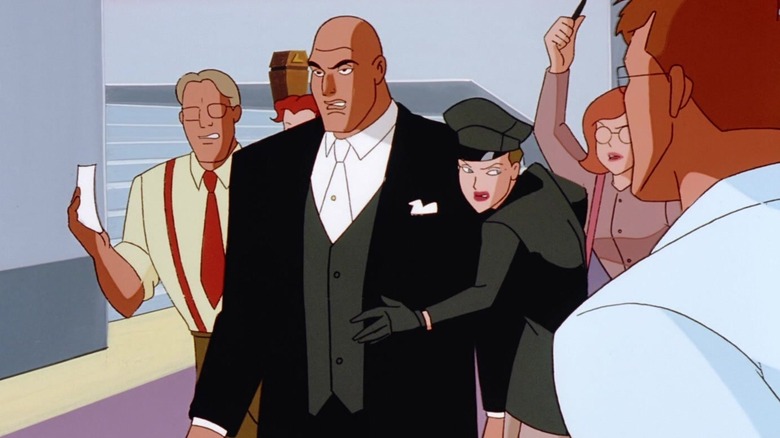
Evil for the sake of evil is tired.
A tortured soul who does evil things for misguided reasons is wired.
One of the most important things a storyteller can do is make the audience care about the villain. That's one of the strengths of "Superman: The Animated Series." Few of the villains are evil just to be evil — most have a reason they're on a dark path.
Several times while watching the series, I wondered why Mercy Graves remained as Lex Luthor's attendant after he mistreated her. In the episode "Ghost in the Machine," we delve into her motivations. Mercy drives Luthor to an event, meticulously grooms him, and sets up a weapons defense system showcase (Lex, my dude, hire some help). The weapons fail. Mercy suspects sabotage. Luthor blames her.
After Luthor disappears while meeting a mysterious caller, a deep fake of Luthor appears on the security monitor outside Luthor's office. It tells Mercy to stay out of his office. Mercy doesn't want to rock the boat. She wants to make him happy. Wait — is she afraid Luthor will fire her? Girl, why?!? This is the perfect opportunity to leave this toxic employer. Your array of bad girl skills would fill a LinkedIn page. Why stay?
We sound find out why Mercy stays: Superman asks Mercy what Luthor has on her, and she talks about how Luthor rescued her from homelessness and gave her purpose. Later, Luthor escapes from an explosion, leaving Mercy to die. Lucky for her, Superman swoops in like OSHA, but guess what — she's still with Luthor, opening doors, by the end of the episode. It's a complicated look into a villain's life decisions — which brings a lot of juice to an episode that was already electric even without being so wired-in to socially charged issues.
Target
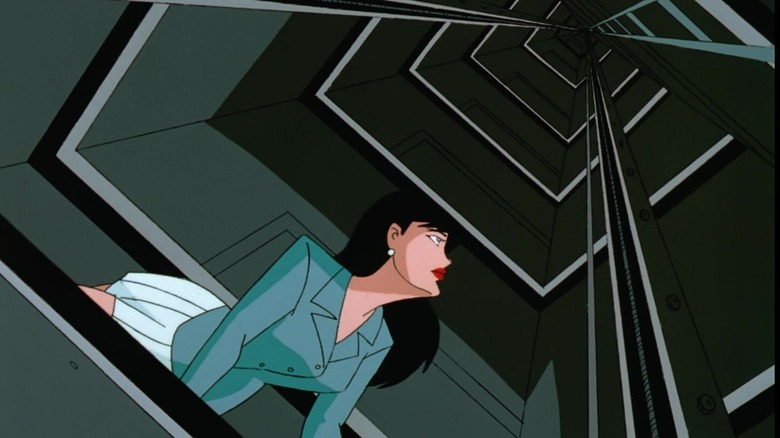
Artistic protagonist? Check
Elaborate symbolic attempt to kill that person? Check
Paranormal mystery unfolds? Check
The "Superman: The Animated Series" episode "Target" has all the hallmarks of a Giallo. You'd think Dario Argento directed this one. Nope — veteran Curt Gena directed a story written by the talented Hilary Bader. I don't know if their intent was to honor the Italian horror genre with their stylistic opening of "Target." I do know they delivered a good setup that strings us along for 22 minutes.
This episode is a great reminder of "Superman: The Animated Series'" cinematic approach — using visuals, music, and structured set pieces to lure us into a world far from our cereal-crunching Saturday mornings on the couch. We're abducted by its artistic elements and sped away by its thoughtful action sequences. Here, Superman isn't just punching faces: He's learning about himself and being forced to make narrative-changing decisions.
In "Target," you see just how frantic Clark Kent and Superman are to save Lois as she's repeatedly marked for death by some unknown assailant. His commitment shows how much he cares about her. Lois, on the other hand, uses each attempt on her life to piece together the puzzle — and find out who is trying to kill her. Lois is clever and brave, but she's no final girl. Superman has to save her in the end. When he rushes over to hold her, she asks Clark how he manages to arrive just in time, adding, "You wouldn't be keeping an eye on me or anything?" He responds, "Some people need more watching than others."
Obsession with eyeballs? Check
An Argento homage, for sure — though it's razor-sharp even without the horror references.
Livewire
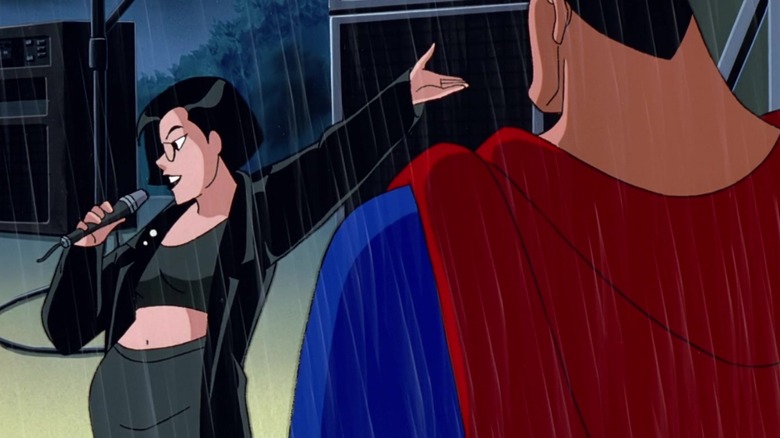
Some of the scariest villains have no superpowers. They aren't hiding in the shadows. They don't silently plot your demise. Some of the scariest villains are outspoken provocateurs who know how to charge up a crowd. Even after you've quieted them or turned them away, that charge sustains.
In the episode "Livewire," shock jock Leslie Willis gains a substantial following by targeting Superman with her high-voltage rhetoric. Anyone who challenges her is shouted down or threatened. It's a narrative we've seen develop in frightening ways outside the series: Extreme politicians and media personalities use lies and fear to fuel dissent, causing distrust and violence.
Willis eventually becomes the super-powered villain Livewire after she's electrocuted while performing a live show. Livewire terrorizes Metropolis by shutting down its power grid. Even after Superman stops Livewire, her message remains, resonating with her followers. They question Superman's actions and praise Livewire's ability to "shake things up."
Political malaise despite forced power outages? Megalomaniacs praised for shaking things up? It certainly feels prescient for an episode that came out in 1997.
Legacy
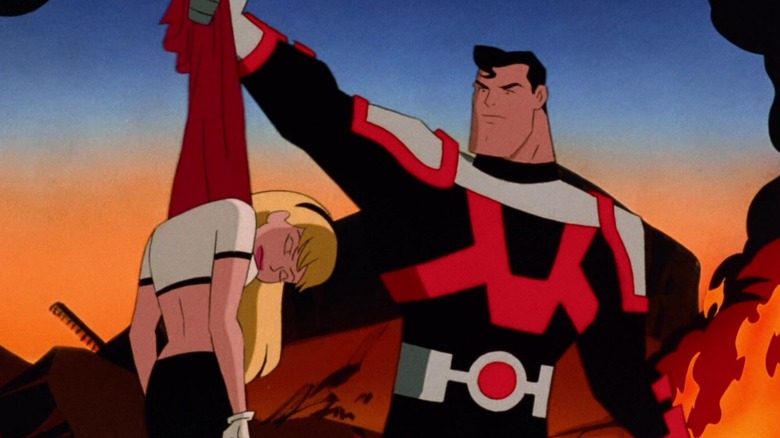
This two-part series "Legacy" is an emotional gut punch for us "Superman: The Animated Series" fans. Its climax hit hard. Superman is left shaken. You're left shaken. Unfortunately, it's the series finale. You're not getting closure.
In the episode "Legacy Part 1," Darkseid besieges an alien planet. His forces are led by a masked being who pummels his enemies with relentless violence. The being takes off his mask and reveals Kal-El. It turns out Darkseid has brainwashed Superman into thinking he raised him as Kal-El, and he wants "Kal-El" to attack Earth while carrying the Superman logo as a banner. Superman lays siege, leaving the people of Earth stunned. Their protector has turned on them. The man who could wipe them off the planet but always chose good has now chosen evil. In their minds, they always suspected he might.
Superman's loved ones save him. He fights back and defeats Darkseid, but the damage is done. Superman battered Earth's infrastructure and shattered the trust he'd worked so hard to establish over a lifetime -– including with some of the people he was closest with. What's worse, doubt creeps in, and Superman admits to Lois that he lost control and it scared him. She kisses him (finally) and says to win them back one at a time.
The series leaves us with so many open compelling questions. How will Superman cope with the hatred? Will he somehow win back Earth's trust? Are he and Lois finally getting together?
It's a shame we'll never know.
World's Finest
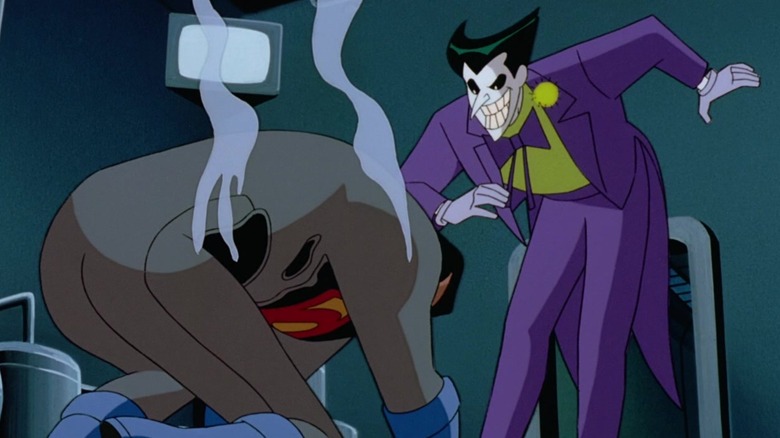
The Joker doesn't have any discernible superpowers, but it's clear he's a superior being. Joker understands his enemies' fears — he uses them as traps. Joker knows his enemies' motivations, and he's always one step ahead.
One of Joker's greatest tricks is his ability to change the rules. That's what made "Batman: The Animated Series" so engaging. That's also what Joker brings in his cameo on the three-part series, "World's Finest." He poaches Caesar Carlini's goons; he outsmarts Lex Luthor; he corners a gadget-less Bruce Wayne; he catches Superman off guard. Joker playfully employs a shrewd unpredictability that Superman hasn't seen before battling his usual suspects. Joker, however, seems to know all about Superman — how to kill him and how to torment him.
Superman and Lois talk about how he's always there to save her. While no one else seems to notice, Joker does. It's almost like he's aware that it's a trope frequently employed in "Superman: The Animated Series" — and he's going to exploit it.
That's just one of many cogs in this well-oiled machine. All three episodes move at an incredible pace — no wasted motion and no pause to let you catch your breath. There are several hero and villain "play" styles in use here and all operate in concert. Superman is playing front and center, as he should be. But Joker holds the baton. He is conducting a masterful orchestration.
Warner Brothers released the three-parter "World's Finest" as a standalone VHS (The Batman Superman Movie 1998/2001). It can stand alone if you want a taste of "Superman: The Animated Series," but these three episodes are best watched within the context of the show. Superman's rules are established and Metropolis' framework is in place. That allows the Joker to pull off his greatest trick: making you his victim.
Read this next: Every DC Movie Made Prior To The DCEU Ranked From Worst To Best
The post The 14 Best Superman: The Animated Series Episodes appeared first on /Film.
